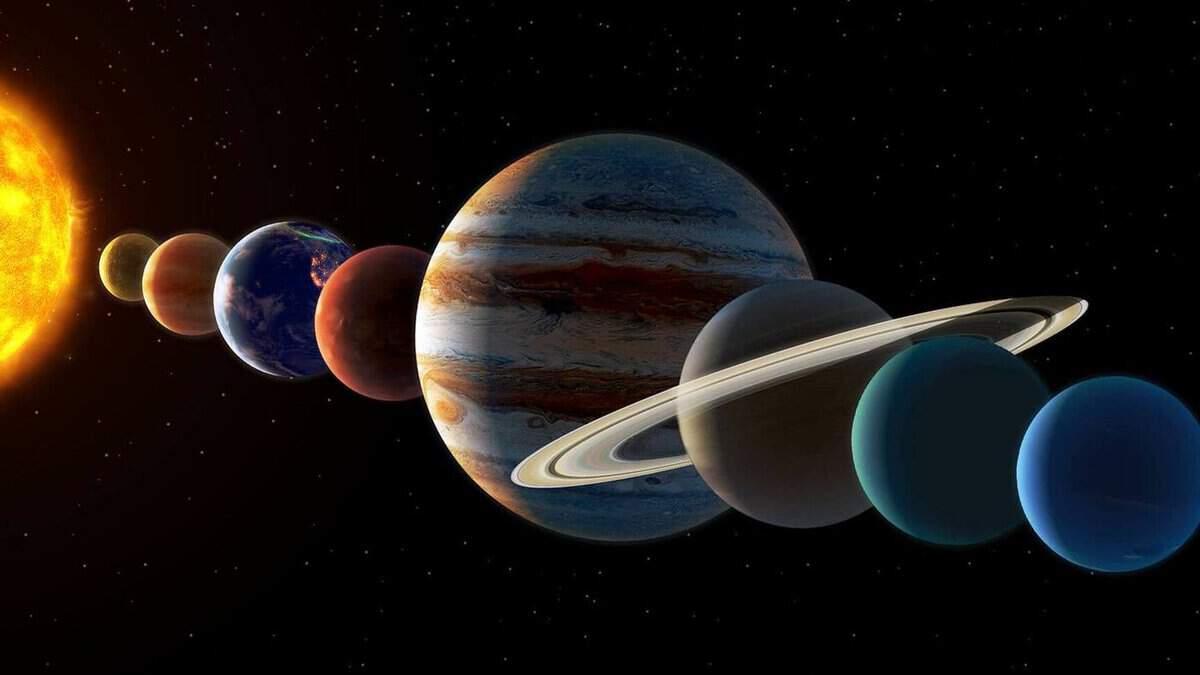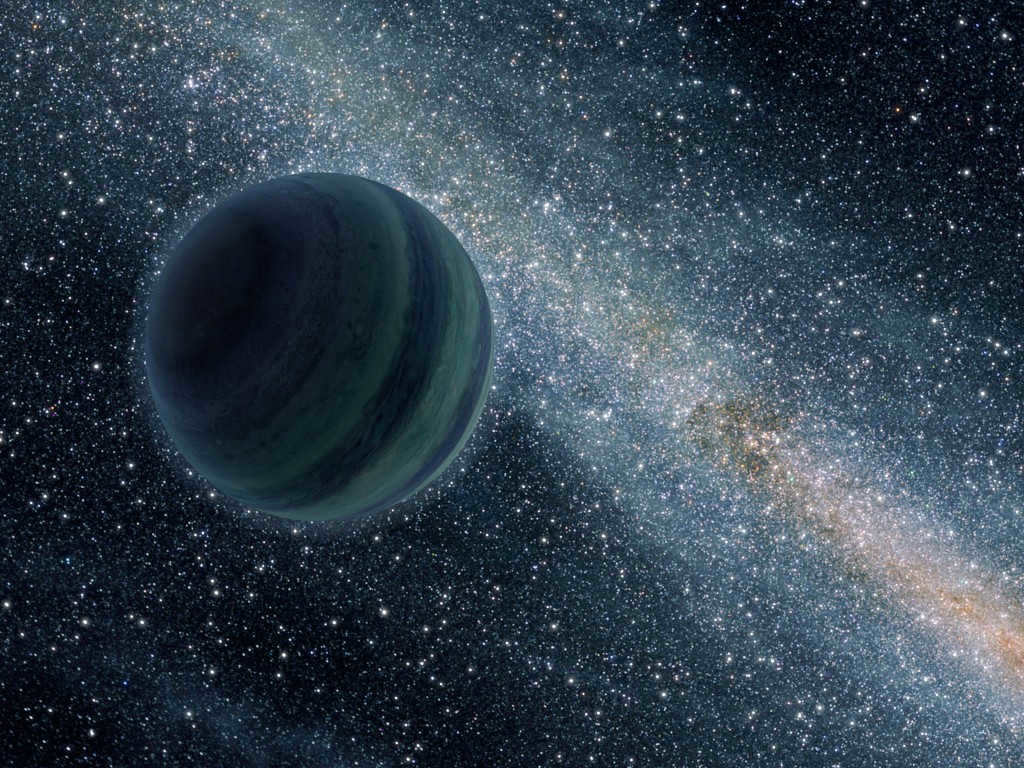
In the year 2006, the status of being the ninth planet in the solar system was taken away from Pluto due to the efforts of an astronomer named Michael Brown. Working together with his colleagues, he came across Eridu and subsequently other dwarf planets that were located far beyond the orbit of Neptune. This discovery served as evidence that Pluto was not unique or large enough to be classified as a complete planet. However, Brown and our fellow countryman Konstantin Batygin now assert that the new Planet 9 is almost within our grasp… and that all that remains is for us to catch a glimpse of it.
Unique Features of the “Planet Hunt”
Indeed, the existence of the elusive ninth planet in our solar system, which remains unseen by human eyes, is supported by substantial evidence. Its discovery is the result of extensive observations of the celestial bodies’ orbits. Based on the principles of gravity formulated by Kepler and Newton, the position of each planet within the solar system depends primarily on its mass. If a planet’s orbit deviates from the expected parameters or displays anomalies, it suggests the presence of another massive object exerting gravitational influence. Neptune, for instance, was the first planet to be predicted mathematically rather than observed directly. In 1846, the French mathematician Urbain Leverrier accurately calculated its position before its visual confirmation.
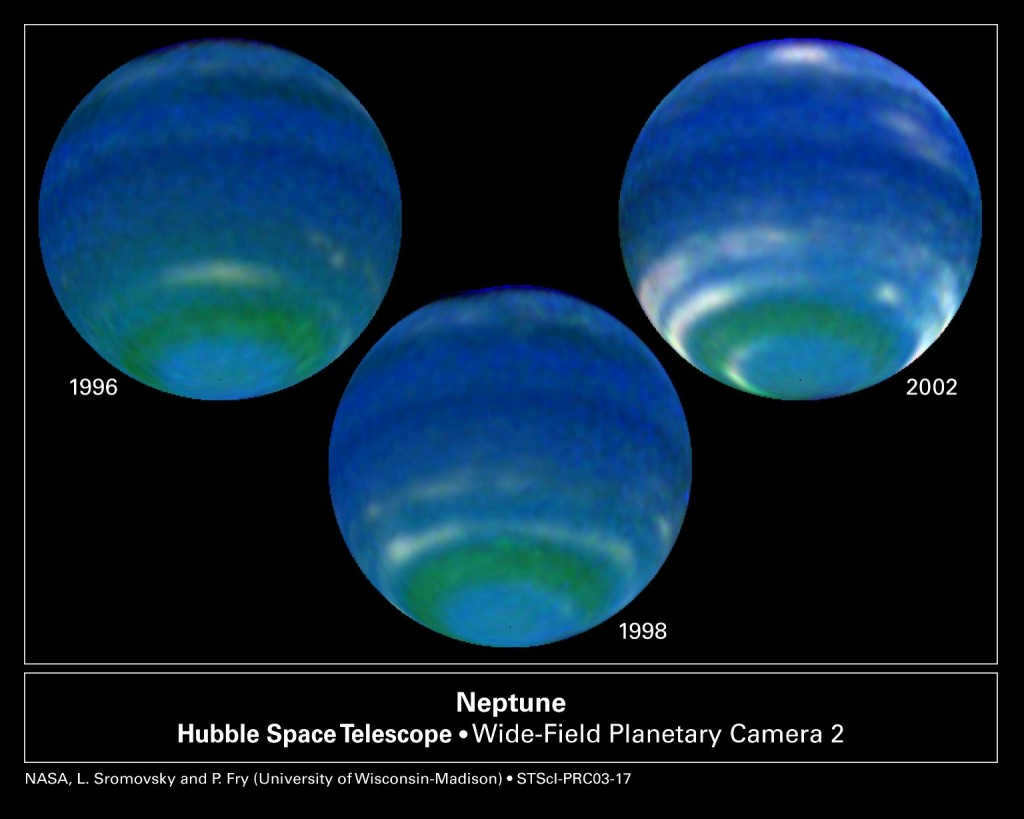

The interaction between planets can be highly dynamic – in the history of the solar system, they have traveled vast distances, getting closer to and moving away from the Sun. The gas giants are particularly notable in this regard. In young planetary systems, they consume all the planet embryos and orbit in close proximity to the star, sometimes even closer than Mercury. As a result, these planets become extremely hot and unstable. Scientists refer to such planets as “hot Jupiters” or “hot Neptunes” depending on their mass and size.
The tumultuous past of our Solar System
Nevertheless, it was Jupiter, the dominant and colossal planet in our Solar System, that brought about a significant transformation. Initially positioned at a distance of 5 to 10 astronomical units away from the Sun, it instigated a series of violent collisions within the protoplanetary disk encircling our star. This momentous event led to the formation of other massive gas giants such as Saturn or Neptune, which emerged in close proximity to the Sun.
However, the recently formed planets exhibited a lack of gratitude by adhering to the laws of gravity – they compelled their “parent” to move closer to the Sun, resulting in the current orbit of Mars. Consequently, Jupiter encroached upon the inner region of the solar system. In other planetary systems, this area tends to be the most densely populated with matter and celestial objects. However, due to Jupiter’s massive presence, the embryos of planets and asteroids were dispersed throughout this region, either being consumed by the Sun’s nuclear furnace or flung toward the outer reaches of the system into the territory known as the modern Kuiper Belt and the Oort Cloud.
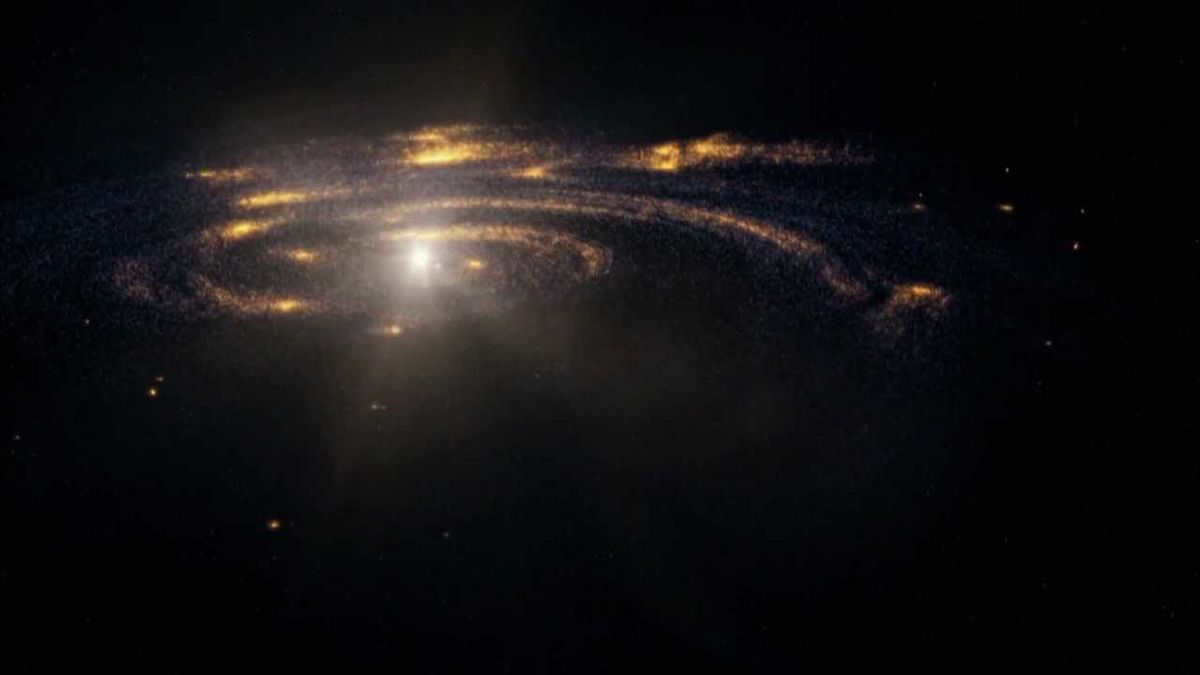
The creation of planets from a cloud of gas and dust surrounding a star in an illustration
If it were not for the influence of Saturn, which caused Jupiter to be bound by gravitational resonance and brought it to its current orbit, the massive gas giant could have wreaked havoc on the entire solar system, ejecting 99% of the planetary material. However, this celestial dance did not go unnoticed, as Neptune and Uranus traded places, resulting in the formation of many of the long-period comets.
Finally, a unique balance prevailed in the Sun’s planetary system – gas giants that formed near the star were located on the periphery, while “rocky planets” like Earth moved closer to the Sun. Nevertheless, certain astronomers argued that in order to maintain this equilibrium, another planet was necessary – and one of sufficient size to exert influence on the larger Neptune and Uranus. This elusive planet, known as Planet X, has been the subject of pursuit by numerous astronomers for one hundred and fifty years – and it appears that Brown and Batygin have made significant progress in its discovery.
The Search for Planet X: A Historical Perspective
Following Leverrier’s groundbreaking calculations that led to the discovery of Neptune through the perturbations in Uranus’ orbit, astronomers realized that the presence of Neptune alone did not fully explain the peculiarities in the orbit of the ice giant. Thus, they embarked on a quest to find another planet that could account for the gravitational influences on the outer regions of the solar system. However, their efforts only yielded the discovery of Pluto, which, due to its mass and orbital direction, was incapable of perturbing larger celestial bodies. It was not until 1989, when Voyager 2 measured the mass of Neptune, that the Uranus-Neptune anomalies were finally resolved, confirming the absence of any contradictions in their orbits.
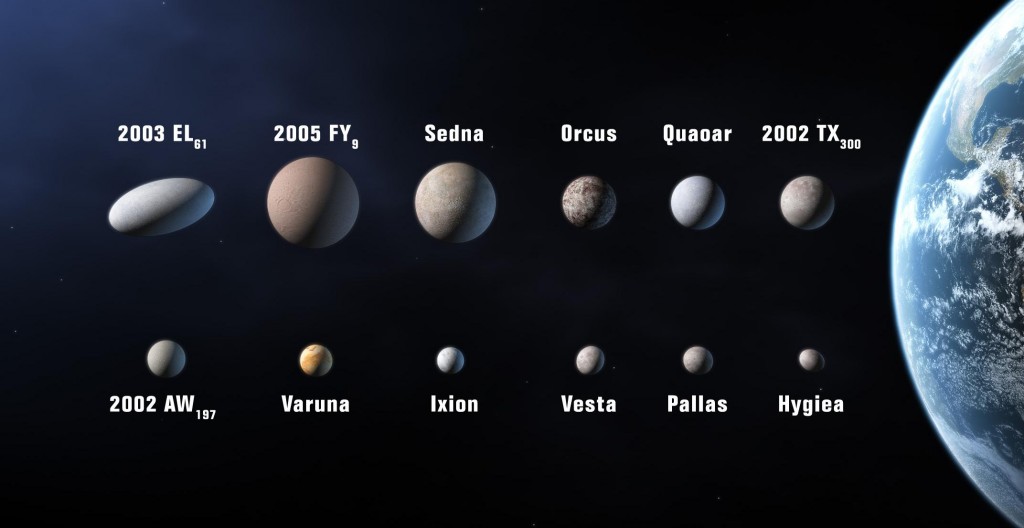

The greatest trans-Neptunian entities
Where is the location and reason behind the existence of the mysterious ninth planet?
Upon observing the recently found planetoids, astronomers C. Trujillo and S. Sheppard, who are colleagues, made an intriguing discovery. A significant number of these planetoids possess elongated, comet-like orbits that come relatively close to the Sun, at a distance ranging from 40 to 70 astronomical units, before moving away for hundreds or even thousands of years. Interestingly, the larger the object, the farther it gets from the Sun. Furthermore, the sednoids exhibit a consistent deviation from the Sun in the same direction.
If we are discussing regular comets, it could be dismissed as a mere coincidence. Over billions of years, these comets have been disrupted by the gravitational pull of the solar system’s major planets, notably Jupiter, Uranus, and Neptune. However, the alignment of significant celestial bodies necessitates the presence of a massive planet with an orbit extending into the Oort cloud.
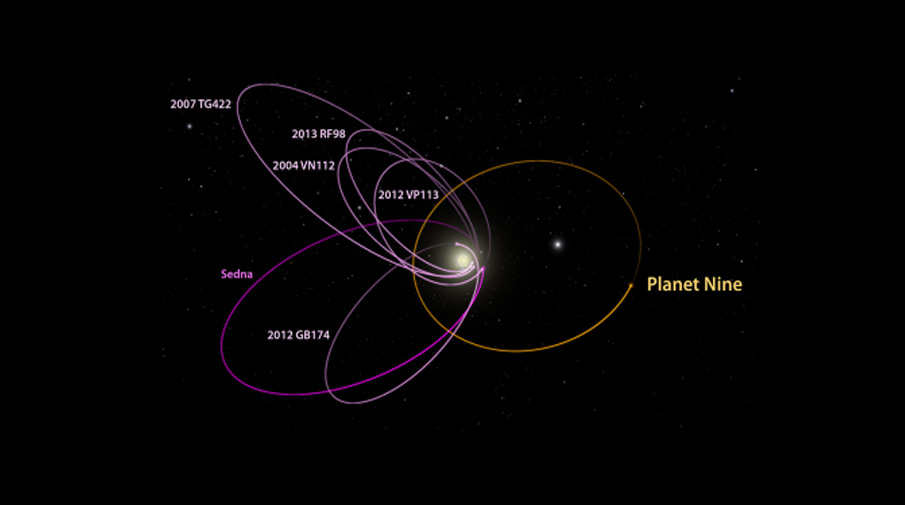

Planet 9 and the orbits of the trans-Neptunian objects it impacted
Brown and Batygin have made a name for themselves by comparing the orbital characteristics of sednoids. They discovered mathematically that the likelihood of their random alignment is only 0.007%. Taking their research a step further, the scientists created a computer model to identify the characteristics of a planet that could alter the orbits of objects beyond Neptune. The data they collected in January 2016 formed the basis for the announcement of the discovery of a new planet in our solar system.
According to Brown’s interviews, there is a 90% probability of discovering the new planet. However, it is premature to claim a definitive discovery until it is observed through a telescope. Nonetheless, the projected attributes of Planet 9 have been released and will be utilized in the forthcoming search.
- The orbital parameters of Planet X will mimic those of sednoids, with the planet’s orbit remaining elongated, eccentric, and inclined relative to the plane of the main planets in the solar system, but in the opposite direction. Consequently, the planet’s perihelion, the point of closest approach to the Sun, will be at a distance of 200 astronomical units, while its aphelion, the furthest distance, will extend up to 1200 astronomical units. This is even greater than Sedna! A single year on Planet 9 will last for approximately 20,000 Earth years, which is the time it takes to complete its entire orbit.
Sedna’s orbit and other objects in the solar system. However, the orbit of Planet X is even larger.
- To exert influence over the planetoids, Planet X requires a substantial mass – thus, it is proposed to be 10 times more massive than Earth and 2 to 4 times larger in size. Nevertheless, these measurements are based on a comparison with Neptune and Uranus – astronomers suggest that the characteristics of Planet X should be similar to those two celestial bodies.
- Similar to Neptune and Uranus, the Ninth Planet will be an ice giant – a celestial object composed of ice, rock, and diverse gases, with a greater density than hydrogen and helium. However, its exact composition remains unknown. The lengthy journey that Planet X took through the solar system in order to accumulate its materials indicates that its composition might deviate from the predictions made by scientists.
Due to its considerable distance from the Sun, the planet is challenging to spot – it necessitates the usage of infrared telescopes or high-powered optical devices capable of capturing even the faintest solar reflections on its surface. Infrared telescopes offer a faster workflow, but mistakes might occur, whereas optical telescopes guarantee dependable results at the expense of time. Despite conducting a comprehensive survey in 2009, the WISE infrared orbiting telescope has yet to discover Planet X, although it has supplied reasonably intricate imagery.
Did you enjoy reading this article? Spread the word to your friends!
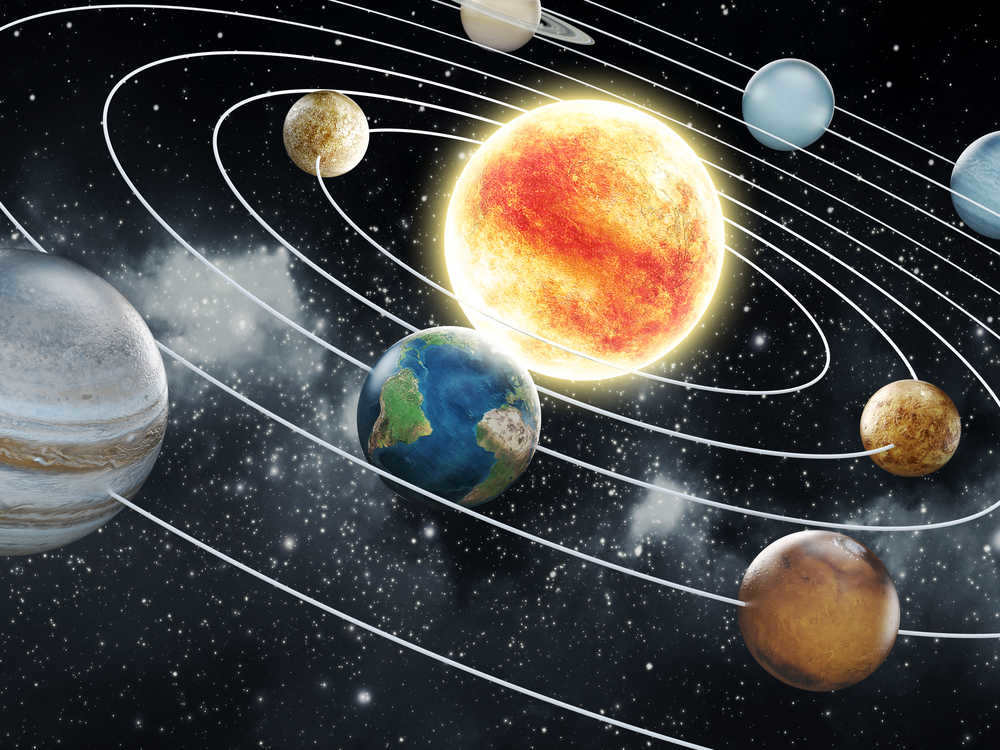
In the outermost region of a vast galaxy known as the Milky Way, there exists a stunningly radiant yellow celestial body that goes by the name of the Sun. Scientists posit that this mesmerizing star originated from a collection of dusty protostellar matter approximately five billion years ago, subsequently giving rise to a series of planets that gracefully orbit around it in a meticulously arranged fashion. Thus, our Solar System came into existence, featuring a total of eight planets (four of which are similar in composition to Earth, while the remaining four are colossal in size) and their respective moons, all encompassed by the enigmatic Kuiper Belt.
The planets of the Solar System follow the same order as Earth in terms of their distance from the host star.
Therefore, let’s examine the planets of the Solar System sequentially, considering their sizes, characteristics, and, naturally, their proximity to the Sun.
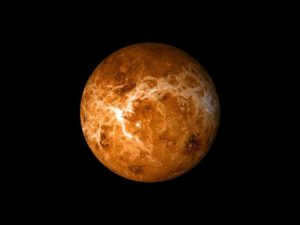
Mercury is the initial planet in the solar system, located closest to the Sun. It boasts the distinction of being the smallest planet, with a radius measuring 2440 km, which is only 38% of Earth’s radius. Unlike other planets, Mercury does not possess any natural satellites or its own atmosphere.
Scientists have speculated that Mercury might have once been a satellite of Venus, but this theory has yet to be definitively proven. One of the reasons for this uncertainty is Mercury’s weak magnetic field. Additionally, the planet’s surface is heavily scarred with craters, a result of frequent collisions with meteorites.
The planet Mercury orbits the sun at a slow pace. In comparison to Earth’s day, Mercury’s day is equivalent to 59 of our days. However, it takes Mercury 88 days to complete one orbit around the sun, while it takes our planet 365/366 days (which can be attributed to its close proximity and shorter orbit). Within its 88-day year, Mercury only completes 1.5 rotations on its axis. This close proximity and slow rotation prevent any possibility of life existing on Mercury, due to the extreme temperature fluctuations. During the day, the average temperature is around 350 degrees (reaching up to 430 degrees), while at night it drops to a frigid 170 degrees below zero.
Another fascinating aspect of Mercury is its unstable orbit, which involves variations in rotational speed, distance, and position.
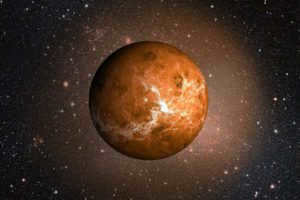
Venus is the second planet from the Sun. When viewed from Earth, it is the planet that is visible in the sky after sunset and before dawn. It is often referred to as the “Morning Star” and the “Evening Star”.
Venus has a thick atmosphere composed mainly of carbon dioxide (96%) and nitrogen (4%). Unlike Earth, Venus has no moons. It is similar in size to Earth, with a radius of 6052 kilometers (about 95% of Earth’s radius). However, due to its dense atmosphere, the climate on Venus is inhospitable for life. The greenhouse effect on Venus is so strong that it creates temperatures of up to +475 degrees Celsius, even higher than on Mercury, the closest planet to the Sun. The atmospheric pressure on Venus is also extremely high, exceeding 90 times that of Earth’s surface.
The unique feature of Venus is its elongated trajectory of motion and its slow rotation around its axis. In terms of Earth’s standards, a year on Venus is 225 days, while a day lasts for 243 Earth days, making it seem like one day on Venus is almost equivalent to a year!
Earth
When considering the planets in our Solar System based on their distance from the Sun, Earth is the third planet. It is located at a distance of 149,600,000 km from the Sun. Earth has a radius of 6,371 kilometers and its mass is estimated to be 5.9726⋅10 24 kg according to theoretical calculations. Earth also has its own satellite, the Moon.
The planet revolves around the Sun in an elliptical path, and one of its notable traits is its relatively fast speed, which amounts to 29.77 km/sec. It completes one full rotation around its own axis in 23 hours and 56 minutes, and completes an orbit around the Sun in approximately 365.24 days.
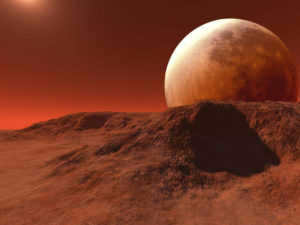
The Red Planet
Mars, also known as the Red Planet, is situated as the fourth planet from the Sun, with a distance of 228 million km separating it from the Main Star. It possesses a thin atmosphere and is home to two satellites of its own – Deimos and Phobos.
In terms of size, Mars is approximately half the size of Earth, with a radius of 3390 km. However, when it comes to the duration of a year, Mars surpasses its “blue sister” by nearly two-fold, with a year on Mars lasting 687 days.
Out of all the planets in the solar system, Mars stands out as the only one with the potential for the existence of primitive life. NASA scientists have theorized that life may have existed on Mars in the past, which is why the Martian surface and atmosphere have been actively studied for several decades. The main obstacle for life on Mars at present is the absence of liquid water.
The planetary structure of Mars bears many similarities to that of Earth. One notable feature is its high concentration of iron oxide, which gives the planet’s surface a distinct reddish hue, earning it the nickname the “Red Planet”. Unlike other celestial bodies, Mars is exceptionally bright, making it visible to the naked eye for us earthlings, without the need for sophisticated astronomical instruments.
Fascinating! During the period of opposition, which happens approximately every 15-17 years, Mars shines brighter and is more visible than both Venus and Jupiter, despite its smaller size.
The enormous planets of our Solar System: their distinctive features and relative distances
Now that we have covered the Earth-like celestial bodies, it is important to focus our attention on the colossal planets that dominate our solar system in terms of size.
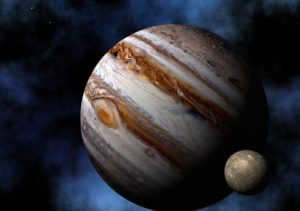
Jupiter
With a radius of 69,912 km, Jupiter is the second largest body in our solar system, surpassed only by the Sun, which is ten times bigger. This gas giant is also accompanied by numerous moons, or satellites, and has several faint rings that are not easily visible from a distance. Interestingly, some of its satellites, such as Ganymede, are even larger than the planet Mercury.
Among all the celestial bodies in our solar system, Jupiter boasts the most powerful magnetosphere, and its atmosphere is primarily composed of helium and hydrogen. The exact chemical composition of its surface remains uncertain, although scientists have determined that it contains significant amounts of inert gases like argon, krypton, and xenon, even more than the Sun.
This planet holds the record for the longest year in our solar system, lasting 4333 Earth days (which is approximately equivalent to twelve years). However, a single day on this planet only lasts ten Earth hours.
Meet Saturn
Renowned as the most exquisite celestial body in our solar system, Saturn owes its beauty to its magnificent ring system. In terms of size, Saturn ranks as the second largest gas giant in our Solar System, trailing only behind Jupiter. With a radius of 58,232 kilometers (which is 945% of Earth’s radius), Saturn is an impressive sight. Its mass is 5.6846⋅10 26 kilograms. Additionally, Saturn is accompanied by a multitude of moons, with the most well-known ones being Titan, Mimos, Dione, and Tefia.
This celestial body possesses its own atmosphere, primarily consisting of hydrogen (over 96%). Additionally, helium, traces of methane and phosphine, ammonium hydrosulfide, and water are present in its composition. The planetary structure is characterized by a cavernous core of high density, encircled by hydrogen. Furthermore, it is distinguished by turbulent winds reaching speeds of up to 500 m/sec. The interior of Saturn is relatively warm, with temperatures near the core estimated to reach 11,700 degrees Celsius, accompanied by fierce surface winds and a faint ammonia haze. All of these factors account for the striking golden and pale yellow bands that can be observed from a distance within its atmosphere. Temperatures can drop to as low as -150 degrees Celsius atop cloudy peaks.
Saturn is located approximately 1.4 billion kilometers away from the Sun, and it takes a little over 29 Earth years for Saturn to complete a full orbit around the Sun. The planet also rotates on its own axis, completing one revolution in about 10.5 hours.
Now let’s talk about Uranus.
Uranus is also a giant planet, ranking sixth in size among the planets in our solar system. It is smaller than Jupiter and Saturn, but larger than the first four terrestrial planets and Neptune.
It was named after the ancient Greek god of the sky. Uranus has a radius of 25,362 km and weighs approximately 8.6813×10^25 kg. It has 27 known satellites and 13 rings, although they are not as prominent as Saturn’s rings.
One unique characteristic of the giant planet is its significant tilt of the axis, which means it is nearly parallel to the ecliptic plane. This creates the illusion that it doesn’t orbit around the Sun, but rather rests on its side and rolls silently like a sphere.
Which planet is the latest addition to the solar system?
As per the latest classification, Neptune is considered to be the farthest planet from the Sun and the last one. It is the 8th planet and, similar to Uranus, it is classified as an “ice giant” with a radius of 24622 km. There is often a debate about the position of the “last” planet. For a long time, it was believed that Pluto, discovered in 1930, was also a planet. However, in 2006, the International Astronomical Union (IAU) concluded that it is not a planet, although there were attempts to reinstate its planetary status, which were later refuted. Regardless, according to the official data, the Solar System consists of 8 planetary formations, with Neptune being the last one, and Pluto is now classified as a “dwarf planet”.
Neptune was first observed in 1846, and what makes it even more fascinating is that it wasn’t actually seen through a telescope but rather discovered through calculations. This gas giant boasts a hydrogen-helium atmosphere, a system of dust rings, and an impressive collection of 14 moons. Noteworthy features include its frigid surface temperatures (covered in ice) and its incredibly powerful winds, which can reach speeds exceeding 260 m/sec and potentially even reaching 600 m/sec, according to some reports.
Being the farthest planet from the Sun, Neptune has the longest orbital period, taking nearly 165 Earth years to complete one revolution around our star. On its own axis, it completes a full rotation in just 16 hours.
It’s important to note that while we have established a list of planets in our Solar System, the International Astronomical Union (IAU) is currently reevaluating certain concepts, including the classification of “planet-like objects.” As a result, it’s possible that this ranking could undergo significant changes in the near future.
The solar system, like any other entity, is not eternal – this is not new information. However, in the past, scientists could only speculate about its eventual demise in broad terms. Now, thanks to the advancement of computer modeling, we have a more detailed understanding of the stages that will unfold during the Sun’s evolution, as well as the fate of each individual planet as they are either absorbed by the Sun or drift away from the system due to the gravitational pull of passing stars. Sean Raymond provides a comprehensive account of the actual apocalypse that awaits our world.
It is an unavoidable fact that our solar system will meet its demise. This process will occur over a span of billions of years, during which a series of unfortunate events, ranging from minor to truly catastrophic, will transpire. Eventually, the solar system will cease to exist: all of the planets will be obliterated, and the Sun will transform into a solitary white dwarf.
(Take a moment to collect yourself and dry those tears).
- The oceans are expected to evaporate.
- There is a chance that the orbits of the rocky planets could become unstable, increasing the risk of collision.
- In the future, the Sun will expand into a red giant and engulf the rocky planets.
- If a star passes by, it could cause dynamic instability among the remaining planets.
- A passing star has the potential to obliterate the final planet in the solar system.
Each of these events is highly likely to occur, except for point 2 – its occurrence is improbable. However, it will take approximately 100 billion years to reach point 5.
1. Liquid and life will vanish from Earth
The Sun is gradually getting hotter. It is now approximately 30% brighter than it was in the early stages of its existence. The conversion of hydrogen to helium inside the solar core leads to an increase in the star’s average molecular mass, resulting in a rise in core temperature and the pace of the fusion reaction (known as the proton chain). This gradual increase in energy production will eventually cause the Sun to consume all its fuel and bring an end to liquid and life on Earth.
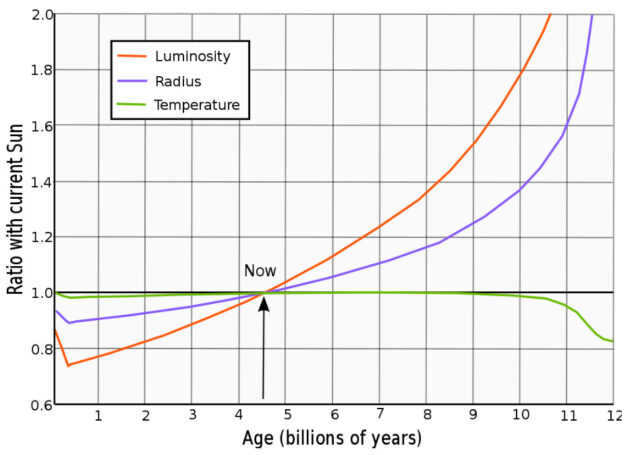
For life to exist, it is necessary to have liquid water. In order to maintain the right amount of liquid water on the planet’s surface, there needs to be a balance between incoming and outgoing energy. This balance is what helps to maintain the optimal temperature range.
The energy balance is constantly adjusting. When there is an increase in greenhouse gases in the Earth’s atmosphere (as is the case today), this creates a “blanket” effect that leads to higher temperatures and a new energy balance.
The Earth has its own built-in thermostat, known as the carbonate-silicate cycle, which helps regulate the amount of carbon dioxide in the atmosphere and maintain a stable climate. Unfortunately, this process operates on a timescale of millions of years, making it too slow to effectively address our current global warming problem.
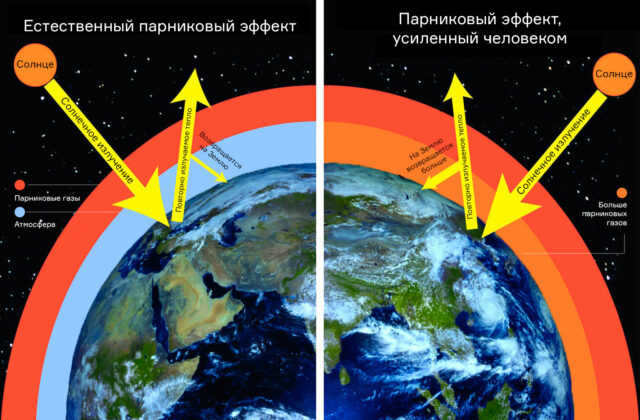
One more factor causing the planet to warm up is the rise in energy input caused by the sun’s growing luminosity. While there are variations in the Earth’s climate on shorter timescales, such as those related to the seasons, alterations in atmospheric composition (caused by both human-made greenhouse gases and volcanic ash), and Milankovitch cycles, the Earth’s surface is gradually and inevitably getting warmer.
At a certain stage, the atmosphere of our planet will reach a state where it is incapable of maintaining a consistent equilibrium of energy, leading to an uncontrollable expansion of the greenhouse effect. The greenhouse effect operates in a self-reinforcing manner. As the temperature of the planet’s surface rises, it results in an increased evaporation of water into the atmosphere. Given that water is a potent greenhouse gas, this phenomenon amplifies the intensity of the greenhouse effect, thereby causing further warming of the planet’s surface.
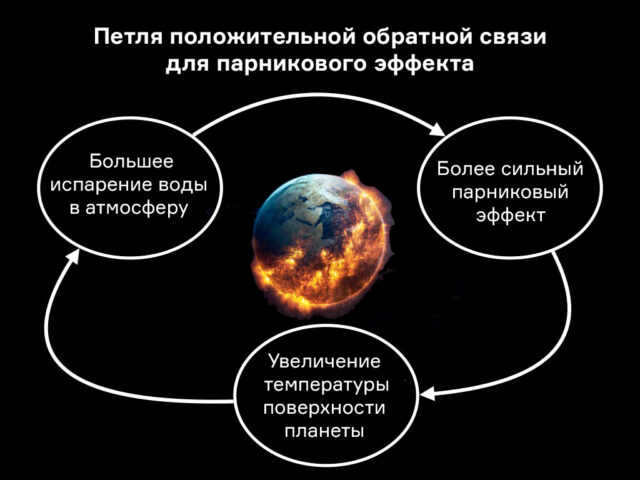
When the greenhouse effect ceases, it will result in the heating of the Earth’s surface to such an extent that the oceans will evaporate entirely. The Earth will gradually become increasingly hotter until a new equilibrium is reached, characterized by an intensely scorching surface and the complete vaporization of water into the atmosphere (which will likely exist in a “supercritical” state, where the distinction between liquid and gas is blurred). Although there will be a greater presence of water vapor near the Earth’s surface, there will be no trace of a liquid ocean.
The stability of the planets’ orbits is limited. From a mathematical perspective, this implies that their precise positions in the distant future (approximately 10-100 million years from now) cannot be accurately predicted.
However, computers can assist us in forecasting the trajectory of these orbits with a certain level of probability. By utilizing specialized codes that track the evolution of orbits over time, we can simulate numerous potential futures for the solar system.
According to certain calculations, it is possible that Mercury’s orbit will become highly stretched or eccentric. This phenomenon could occur if Mercury enters into an “age resonance” with Jupiter. This alignment of orbits gradually elongates Mercury’s orbit.
Once Mercury’s orbit becomes so elongated that it intersects with Venus’ orbit, extraordinary events can unfold. Mercury may approach the Sun to such an extent that it is engulfed by it.
There is a chance that Mercury may collide with Venus. One possible scenario we can simulate is that Mercury will alter the orbits of the other rocky planets to the extent that Earth and Mars collide.
What are the odds of this happening? Will Earth truly collide with Mars in 3 billion years? The most comprehensive study conducted so far has indicated that there is a 1% chance that Mercury will enter into resonance with Jupiter within the next 5 billion years. And even if that occurs, the likelihood of Mercury colliding with Earth is low. It is more probable that Mercury will either be captured by the Sun or collide with Venus.
In other words, there is a 99% probability that the orbits of the rocky planets will continue to revolve around the Sun as usual, at least until the Sun itself undergoes changes…
In the future, the Sun is predicted to undergo a dramatic transformation as it evolves into a red giant. During this phase, it will expand and engulf the nearby planets. Eventually, after this spectacular event, the Sun will settle into its final stage as a white dwarf.
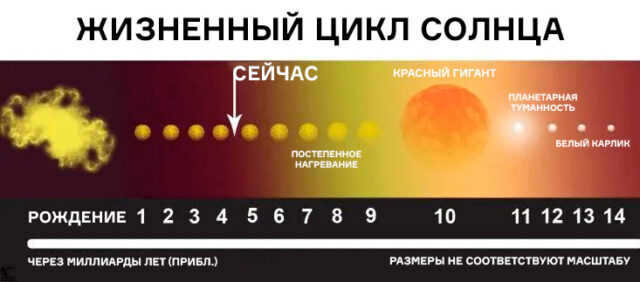
For approximately 500 million years, the Sun will maintain its status as a red giant. During this time, its luminosity will increase, causing the habitable zone to expand and encompass Jupiter and Saturn. As a result of these changes, there is a possibility that liquid water will emerge on the surfaces of the large moons orbiting these gas giants. Numerous moons in this system contain significant amounts of water within their interiors. Take Ganymede, for example, which is the largest moon in our solar system. While its mass is about forty times smaller than Earth, it is estimated that around half of Ganymede is composed of water. This water content greatly surpasses that of Earth, as our planet consists of water that makes up only 1/1000th of its total mass. In approximately seven billion years, Ganymede will transform into a fully-fledged oceanic moon.
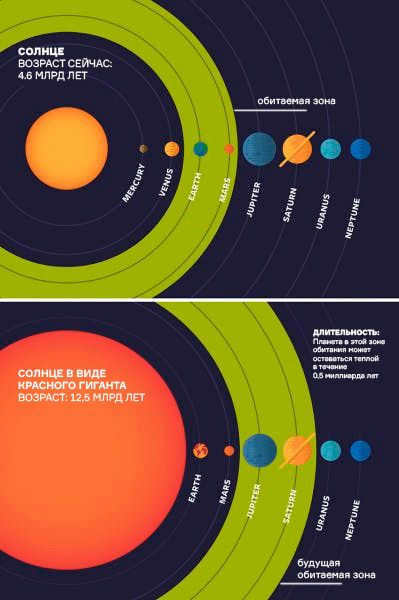
The planetary orbits will undergo changes in response to the evolving Sun. As the Sun transforms into a red giant, it will engulf the inner planets, consuming them entirely. Simultaneously, the Sun’s gravitational pull will diminish as it sheds mass due to the forceful winds emanating from its surface. Consequently, the orbits of the more distant planets will expand and stretch outwards.
During this process, the Sun will undergo a drastic expansion, growing approximately a hundred times in size and extending its reach to encompass the Earth’s current orbit. Our planet finds itself on the precipice of uncertainty, as it remains uncertain whether it will succumb to being swallowed by the Sun or if it will instead be propelled into a wider and more distant orbit.
While waiting, the core of the Sun will contract until the higher temperature and pressure enable the fusion of helium. Numerous solar flares will take place, after which the Sun will release its outer layers and form a “planetary nebula” (despite its misleading name, it has no connection to planets). Only the core, a compact white dwarf, will remain as the remnants of the Sun, gradually cooling over time.
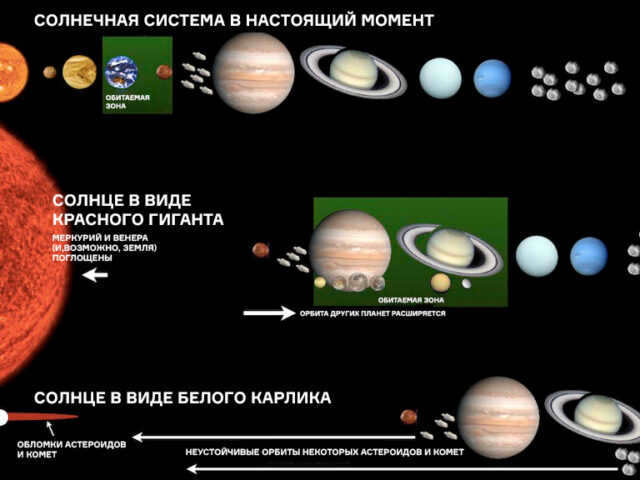
White dwarfs have a mass comparable to that of the Sun, however, they have a size similar to that of the Earth. Due to this, their gravitational force is incredibly strong, causing any substance heavier than hydrogen or helium to accumulate in their atmosphere within a short period of time – a blink of an eye in astronomical terms.
When observing white dwarfs, a majority of them exhibit a state of “pollution”: their spectra do not show pure hydrogen or helium because their outer layers have been contaminated by rocky (and occasionally icy) material. Matter from nearby orbits can fall onto the white dwarf, resulting in its contamination. This matter originates from small celestial bodies that were expelled from their original orbits by planets. Due to the white dwarf’s small size, these small bodies do not collide with the star, but are instead torn apart by its gravitational force, forming rings of rock that gradually disintegrate into dust as they orbit in close proximity to the white dwarf.
However, that is not the conclusion. Five (or perhaps six, if Earth is fortunate) planets will endure to confront the Sun as a white dwarf.
3. A passing star will cause dynamic instability among the planets
Nothing remains permanent (not even a chilly November rain).
Once the Sun transforms into a white dwarf, its planetary system will expand to nearly double its current size. Not in terms of the quantity of planets, of course (farewell, inner rocky planets), but in terms of the magnitude of the orbits of the surviving planets. The Sun will shed approximately 40% of its mass, the majority of which will generate a beautiful planetary nebula. The orbits of the planets will expand by roughly 85% as a result. Neptune’s orbit will increase from 30 to about 55 astronomical units, serving as the outer boundary of the planets.
The newly established stability will now solely be jeopardized by other stars.
During their early stages, stars tend to be in close proximity to one another. In clusters where stars are born, it is common for them to pass by each other at relatively short distances. The actual number of close encounters depends on the size and density of the cluster. Occasionally, the gravitational pull between stars has an impact on the objects orbiting them. For instance, a passing star can disrupt the outer regions of another star’s disk that is in the process of forming planets. Moreover, there are instances where a passing star can even capture a planet that has a wide orbit around the other star. This scenario is considered a potential explanation for the existence of a hypothetical ninth planet.
According to one theory, the orbits of extremely distant objects in the Kuiper belt were established during the early stages of the solar system’s formation, when the star was positioned several hundred to a thousand astronomical units away from the Sun. It should be noted that this particular theory is subject to controversy. This distance is typical for an encounter that could occur with a star similar to our Sun.
Once generic clusters disperse, stars tend to remain widely separated. This is because space is incredibly vast. By considering the density of stars in the vicinity of the Sun and their average velocity, we can estimate the amount of time it takes for a star to travel a certain distance away from the Sun. On average, another star passes within 10,000 astronomical units of the Sun approximately every 20 million years, within 1,000 astronomical units every billion years, and within 100 astronomical units every 100 billion years.
Allow me to share an incredible study conducted in 2020 by John Zink, Konstantin Batygin, and Fred Adams. This groundbreaking research has significantly enhanced our comprehension of the long-term future of our Solar System. These esteemed scientists developed ten distinct scenarios to simulate the orbital evolution of our solar system over the course of the next trillion years. It is worth noting that this timeframe is approximately 70 times longer than the current age of the universe, which is estimated to be just 14 billion years since the Big Bang. The ten models constructed exhibit variations primarily related to the interactions between stars and the Sun, as well as the planets.
According to Zink and his team’s models, it is predicted that in approximately 30 billion years, a different star will come close to the solar system within a few hundred astronomical units. This close encounter will result in a significant dynamical instability, far more intense than the one experienced during the formation of the solar system. Instead of the gradual expansion of the giant planets’ orbits, the system’s dynamics will resemble a chaotic instability, a phenomenon frequently observed in exoplanet systems with giant planets (often leading to the destruction of their rocky planets).
This phenomenon of dynamic instability will expel all planets except for one. The gravitational interactions between the planets will provide enough orbital energy for each planet (excluding one) to be propelled into interstellar space, transforming them into rogue planets. In the majority of Zinc’s simulations, Jupiter emerged as the sole survivor, orbiting in an elongated path reminiscent of giant exoplanets.
Subsequently, the solar system would be reduced to a solitary white dwarf, once known as the Sun, alongside Jupiter.
4. The final planet in the solar system will be obliterated by a passing star
Similar to how every rope possesses a breaking point, any planet can be ripped away from its star if another star comes into close proximity.
In this particular scenario, Jupiter, the ultimate planet in the solar system, would find itself in a vast and elongated orbit.
While it is possible for other stars to exert enough force on Jupiter to cause it to break away from its orbit, the most significant factor in this process would be very rare and extremely close encounters. According to the models developed by Zink, it would take approximately 100 billion years for a star to pass within a distance of about 200 astronomical units from Jupiter. During this encounter, the star’s gravitational energy would provide Jupiter with the necessary momentum to escape the gravitational pull of the white dwarf Sun and travel indefinitely. Zink’s calculations indicate that the last planet in the solar system is projected to escape within a time frame of 40 billion years at the earliest, but no later than 300 billion years.
This is the way the story of the solar system will conclude. I trust you relished this narrative.
Our family website caters to visitors of all ages and genders
What is the count of planets in the solar system? Which planet in the terrestrial group is the largest, the gas giant planets? How many planets exist in the universe? Intriguing pieces of information about the planets in the solar system
On August 15, 2023, there were no comments posted by the admin.
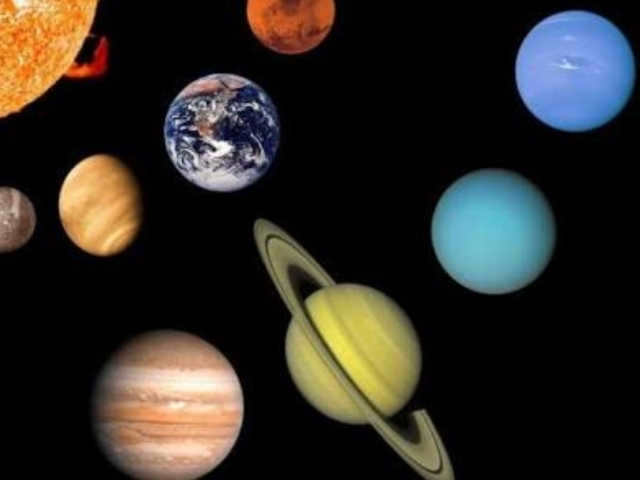
There is a wealth of fascinating information to be discovered not just about our own planet, but also about the other celestial bodies in our solar system. In this article, we will explore some of these intriguing facts.
The star that shines the brightest in the vast expanse of outer space is none other than our very own Sun. It provides us with light, heat, and energy. Surrounding the Sun at various distances are numerous celestial objects, some of which constitute our solar system.
Many individuals are uncertain about the exact number of planets in our solar system, whether it is 8 or 9. However, recent research conducted by an English mathematician has confirmed that there are indeed only eight planets in our solar system, as the ninth planet, Pluto, has been reclassified. Pluto has now been officially removed from the list of planets in our solar system.
This decision was made based on the discovery of several celestial bodies that share similar characteristics with Pluto. As a result, Pluto, along with these other objects, has been reclassified as a dwarf planet.
The primary source of heat and energy for most planets is the Sun. Therefore, the climate and overall conditions of these planets are influenced by the reflective properties of their atmospheres.
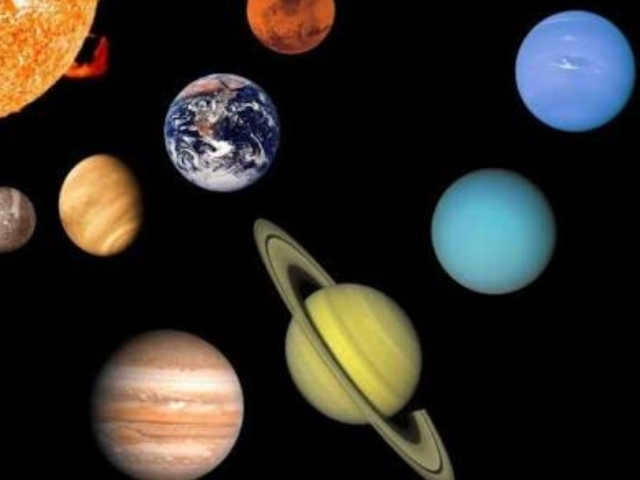
If we arrange the planets in order of their proximity to the Sun, they would be as follows:
- Mercury. This planet is the closest to the Sun. Due to its close proximity, Mercury experiences heat and light that is 7 times stronger than what the Earth receives. This poses significant challenges for scientific research on the planet. Daytime temperatures on Mercury can reach up to 400°C above zero.
- At night, the temperature drops drastically and can reach as low as 200°C below zero. Mercury is primarily composed of an iron core, while its thin crust bears numerous scars and craters resulting from collisions with various celestial objects. A year on Mercury lasts 88 days.
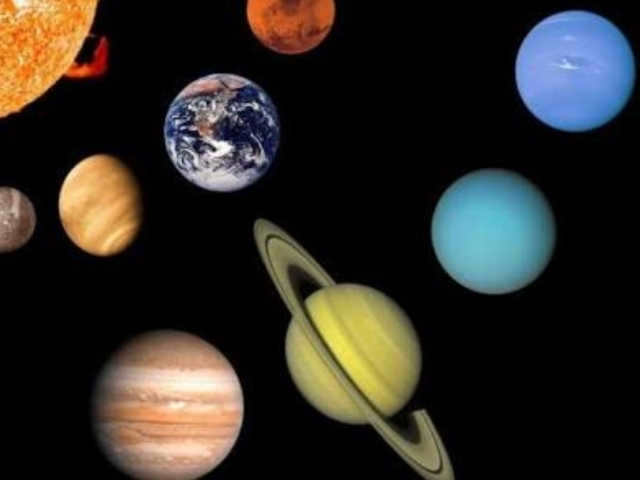
- Venus. The planet that comes after Mercury. One notable characteristic of this celestial body is its counterclockwise direction of motion. Venus is the closest planet to Earth and is approximately the same size. Its orbit is nearly circular in shape. It takes around 250 days for Venus to complete one rotation on its axis. The surface temperature can reach up to 450°C above zero.
- The planet Venus has a dense atmosphere that creates a greenhouse effect and has excellent light-reflecting properties. Its surface is composed of basaltic lava and is dotted with numerous volcanoes, mountains, and craters. The planet’s iron core accounts for a quarter of its total mass, and the crust can reach a thickness of 15 kilometers. Venus has a year that lasts 225 days.
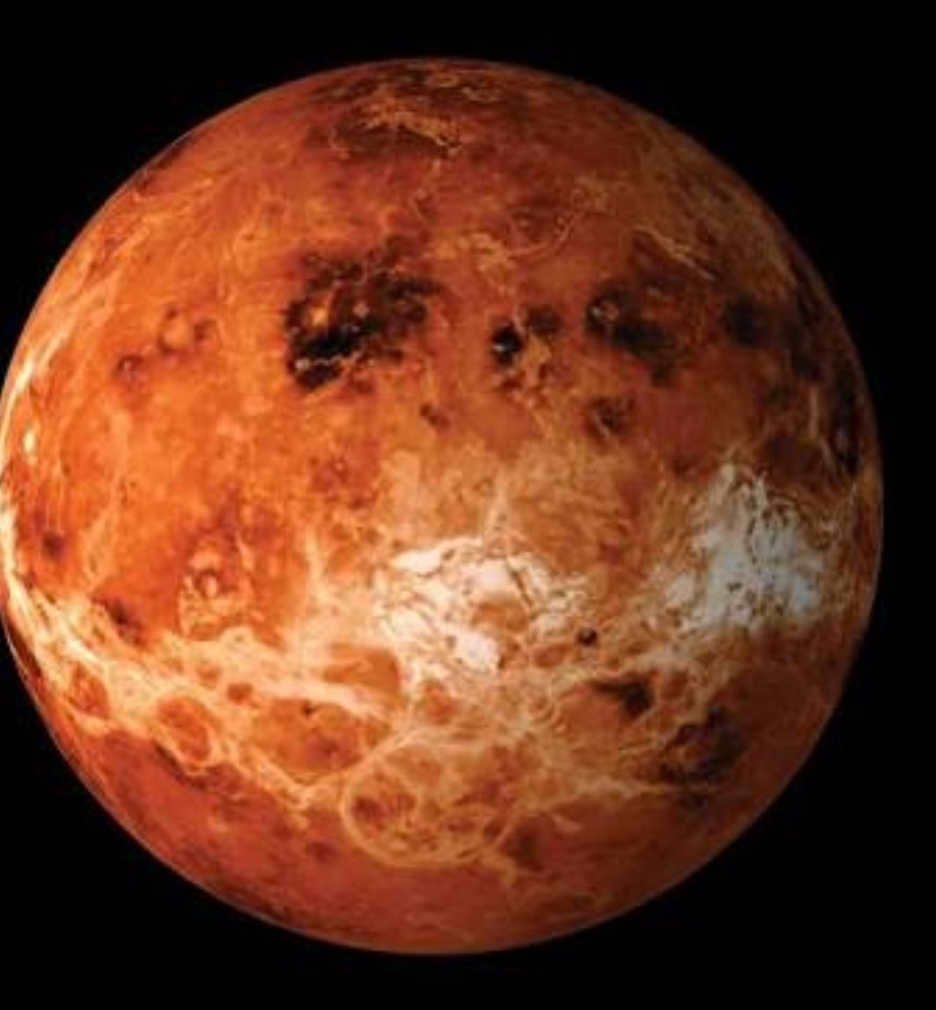
- Earth is the only known planet to support life. The majority of its surface is covered by oceans, while the remaining land is home to forests and mountains. Earth’s atmosphere is rich in nitrogen and oxygen. Its calendar year is 365 days long, and the crust can reach tens of kilometers in thickness.
- Inside the planet, there exists a core made of iron. Around 3-4 million years ago, the first forms of life emerged on this planet as a result of matter evolution. The magnetic and electric fields play a significant role in shaping the processes on this planet. Earth is accompanied by its own satellite, the Moon, which was once a part of Earth.
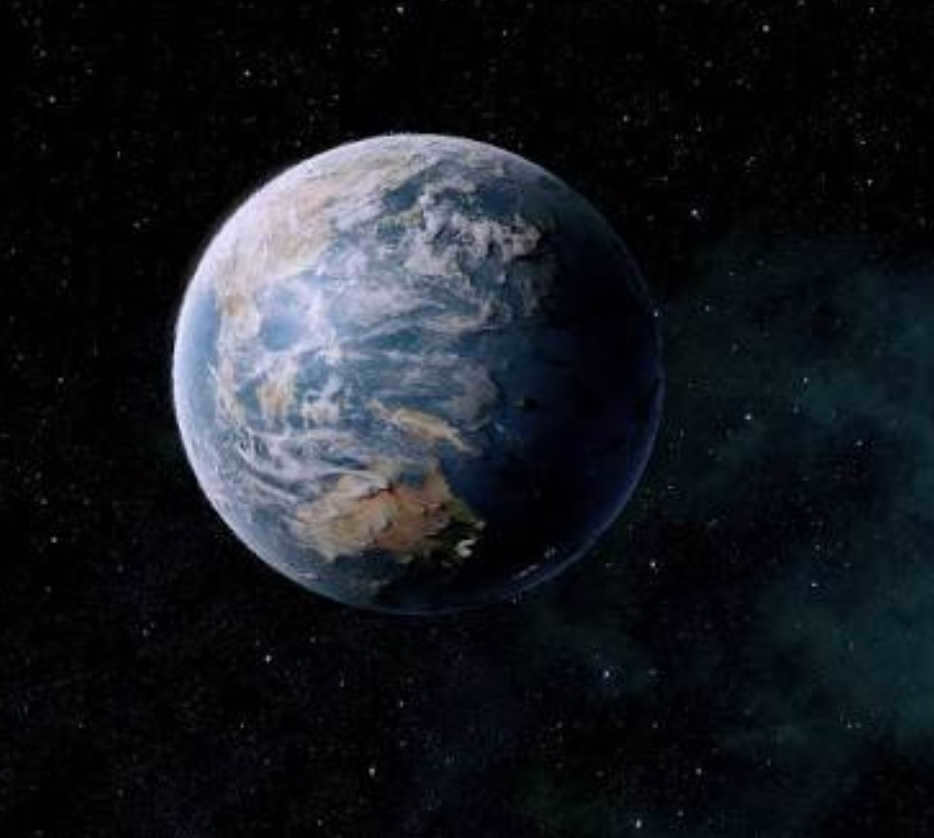
- Mars is the fourth planet in our solar system, positioned in relation to the Sun. The soil on Mars contains a high concentration of oxidized iron, which gives the planet its distinct red color. There are several large volcanoes spread across its surface. Mars is orbited by two moons, Deimos and Phobos. A year on Mars lasts 780 days.
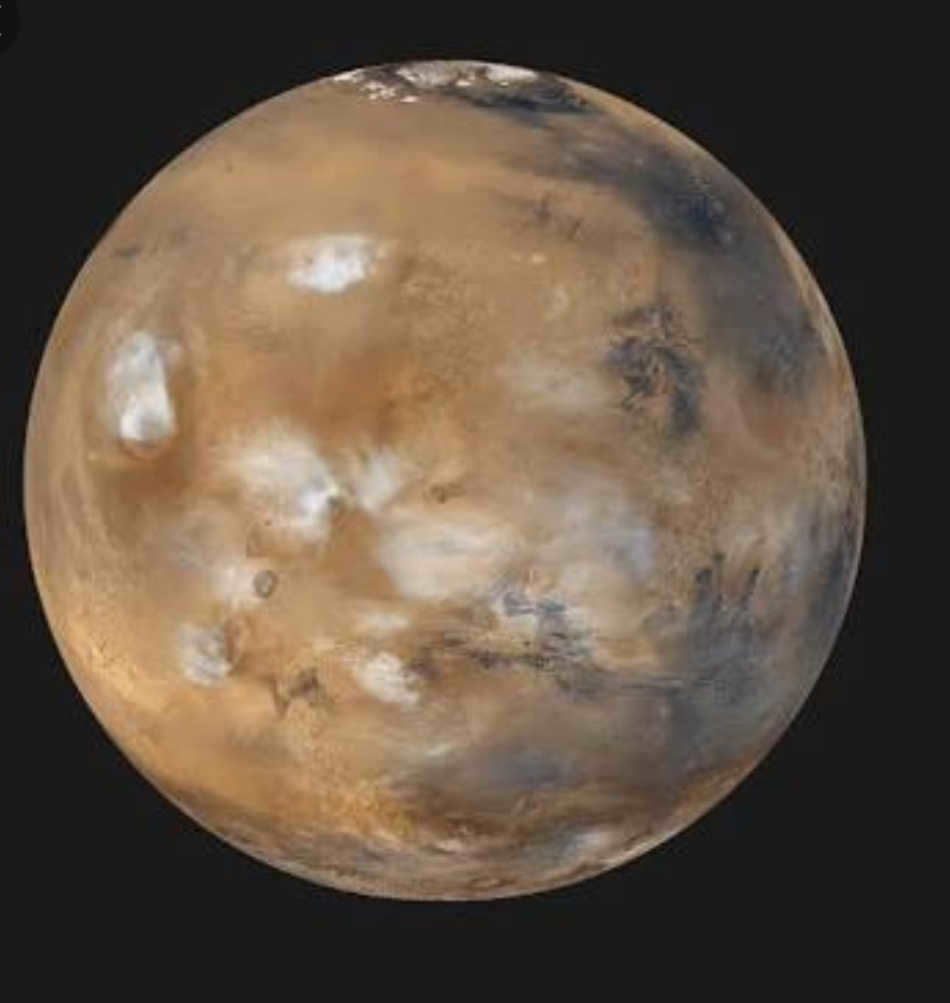
- Jupiter is positioned 775 million kilometers away from the Sun and is classified as one of the gas giants. The primary component of Jupiter’s atmosphere is hydrogen, and its atmospheric layer can reach a thickness of 50-60 thousand kilometers. The planet’s internal structure is still not completely understood, leading to ongoing debates among scientists.
- Jupiter is accompanied by 16 satellites in its orbital path, which takes 12 years to complete. One of Jupiter’s prominent features is a large red spot that resembles an everlasting storm or hurricane. Additionally, Jupiter possesses a strong magnetic field.
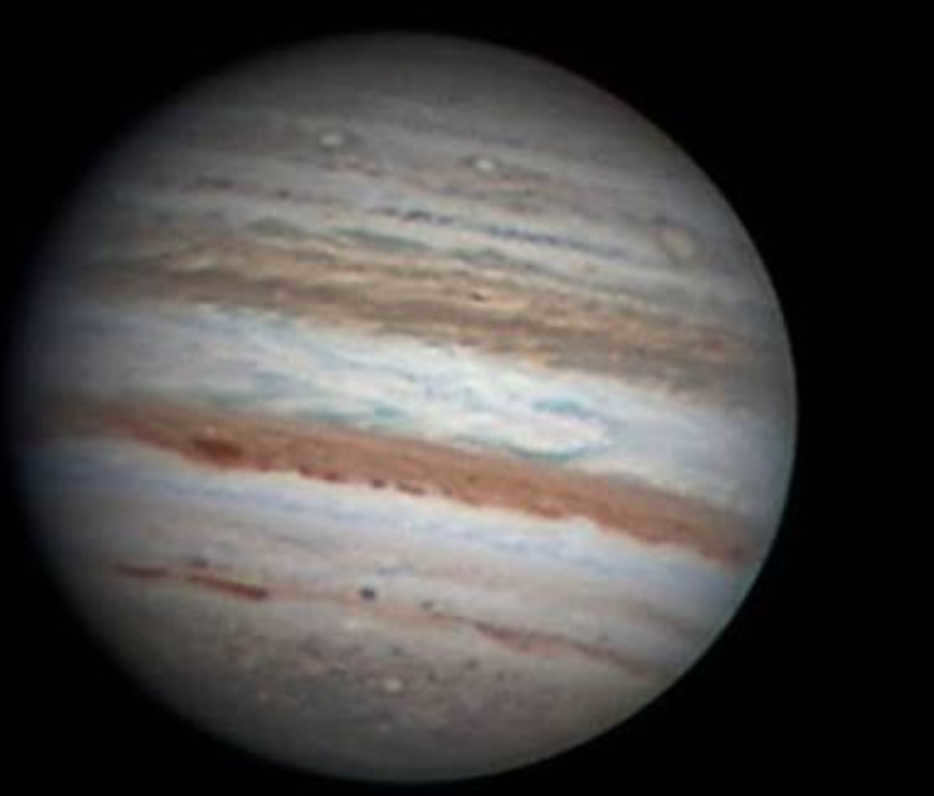
- Saturn is the sixth planet from the Sun in our solar system. It is known for its beautiful rings made up of rock and ice, which have a width of 115,000 kilometers. These rings rotate at different speeds, with the inner parts moving faster than the outer parts. The gaps between the rings are formed by the gravitational force of Saturn’s many moons, which cause them to break up. In total, Saturn has 62 satellites orbiting around it.
A year on Saturn is equivalent to 29 Earth years. The planet’s core has a scorching temperature of up to 12,000°C, while the surface can plummet to a bone-chilling temperature of -180°C. The main elements that make up Saturn are helium and hydrogen.
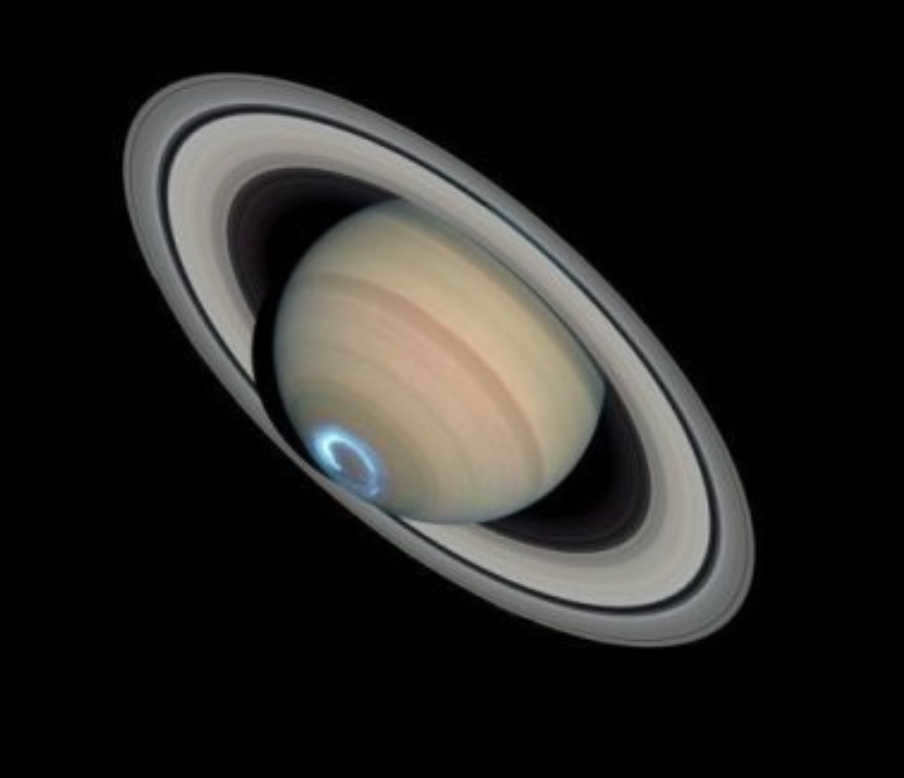
- Uranus. Known as the coldest planet in our solar system, Uranus experiences temperatures as low as -224°C. This extreme cold is believed to be caused by its small rocky core. The planet’s atmosphere is composed of methane, hydrogen, and water. Uranus is also accompanied by 27 satellites and has 13 rings surrounding it.
- Interestingly, the existence of these rings was not known for a long time due to their weak reflective properties. Another unique characteristic of Uranus is its unusual orientation. Unlike other planets, Uranus is tilted on its side, with an inclination to its orbit of more than 90 degrees. This gives the illusion that Uranus rolls like a ball instead of rotating.
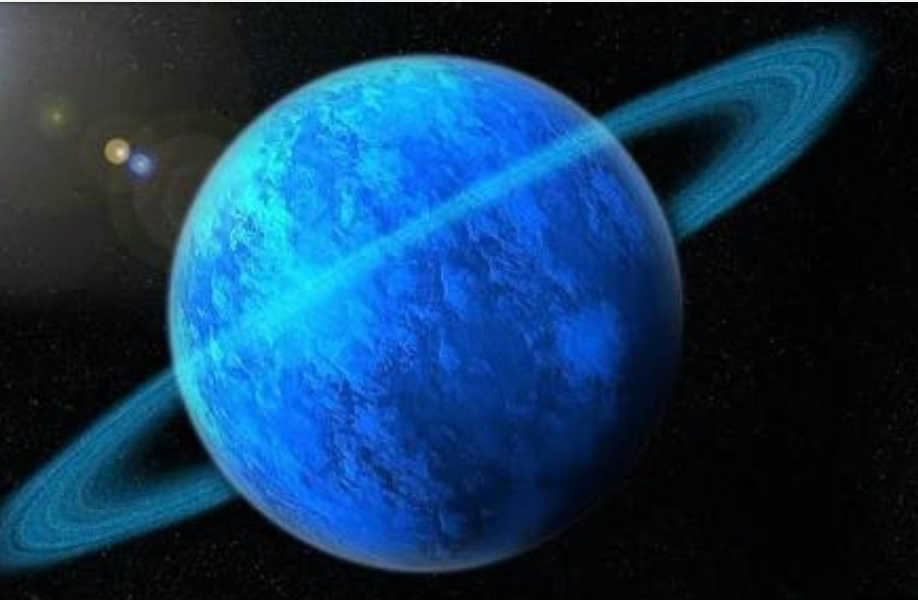
Which Earth group planet is the largest and heaviest?
The planets in our solar system revolve around the sun in their respective orbits and each planet has its own unique characteristics and name. If you are looking for cosmetic lip care kits, you can find them at WildBerries by visiting their website: https://www.wildberries.ru/catalog/krasota/uhod-za-kozhey/uhod-dlya-gub/kosmeticheskie-nabory-dlya-uhoda".
When it comes to size and composition, planets can be classified into two distinct groups:
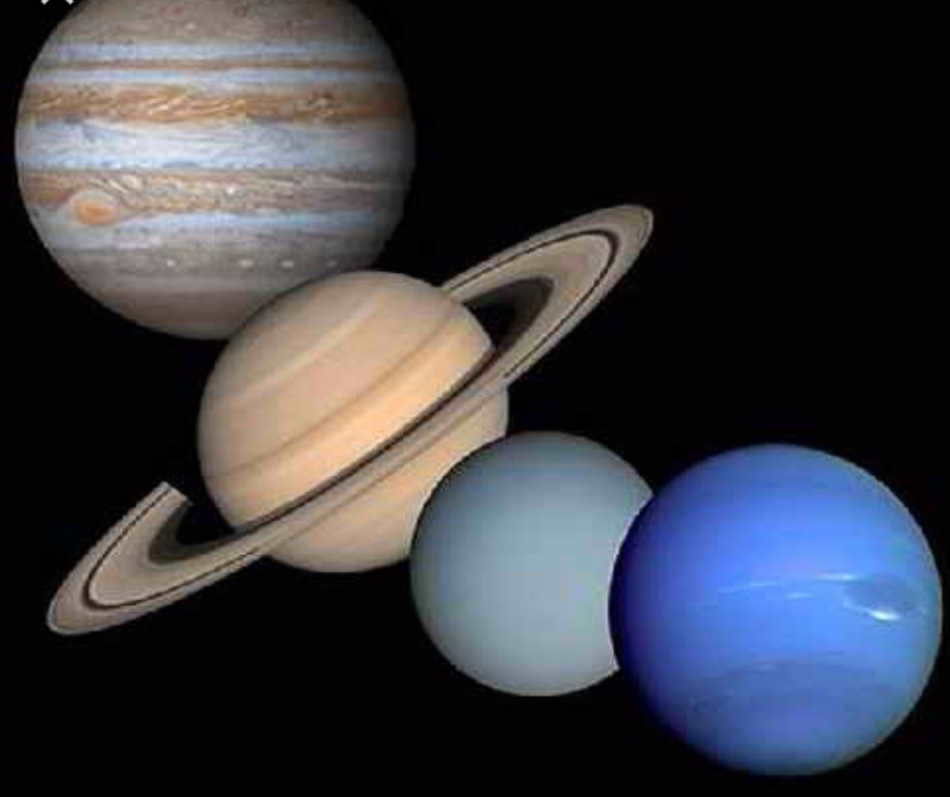
- In the first category, we have small celestial bodies that are primarily composed of rock on their surface. These objects have a relatively low mass and few satellites. They possess strong magnetic fields and are part of the Earth group.
- The second category consists of immense planets made up of dense gas and ice formations. These entities are accompanied by a multitude of satellites and rings. They are known as gas giants.
- The gas giants in this group are Jupiter, Saturn, Uranus, and Neptune. These planets share similar characteristics and boast impressive sizes. Their structure is primarily composed of gas, resulting in a low density index.
- Gas giants are located further from the Sun compared to the Earth group. These planets are known as cold planets due to their consistently low temperatures.
- The planets in this group have numerous moon families orbiting around them. Some of these moons are attracted by the planets’ gravity and move in the same direction. Each of these planets experiences large-scale storms.
- The Earth group of the solar system is made up of four planets – Mercury, Venus, Earth, and Mars.
- These objects primarily consist of rocky materials and various metals. The core of these planets is composed of heavy iron.
The planets are distinguished by their size:
- Venus and Earth share many similarities in various characteristics. Venus is believed to have the same internal structure.
- A notable difference between the two objects is that Venus lacks lithospheric plates, which are important in tectonic processes.
- To compare the planets, let’s look at their basic parameters.
Earth group:
- Earth: diameter: 12,765 km, mass: 5.972E24 kg, distance from the Sun: 149.6 million km
- Venus: diameter: 12,103 km, mass: 4.867E24 kg, distance from the Sun: 108.2 million km
- Mercury: has a diameter of 4878 km, a mass of 3.30E23 kg, and is located at a distance of 57.9 million km from the Sun.
Gas giants:
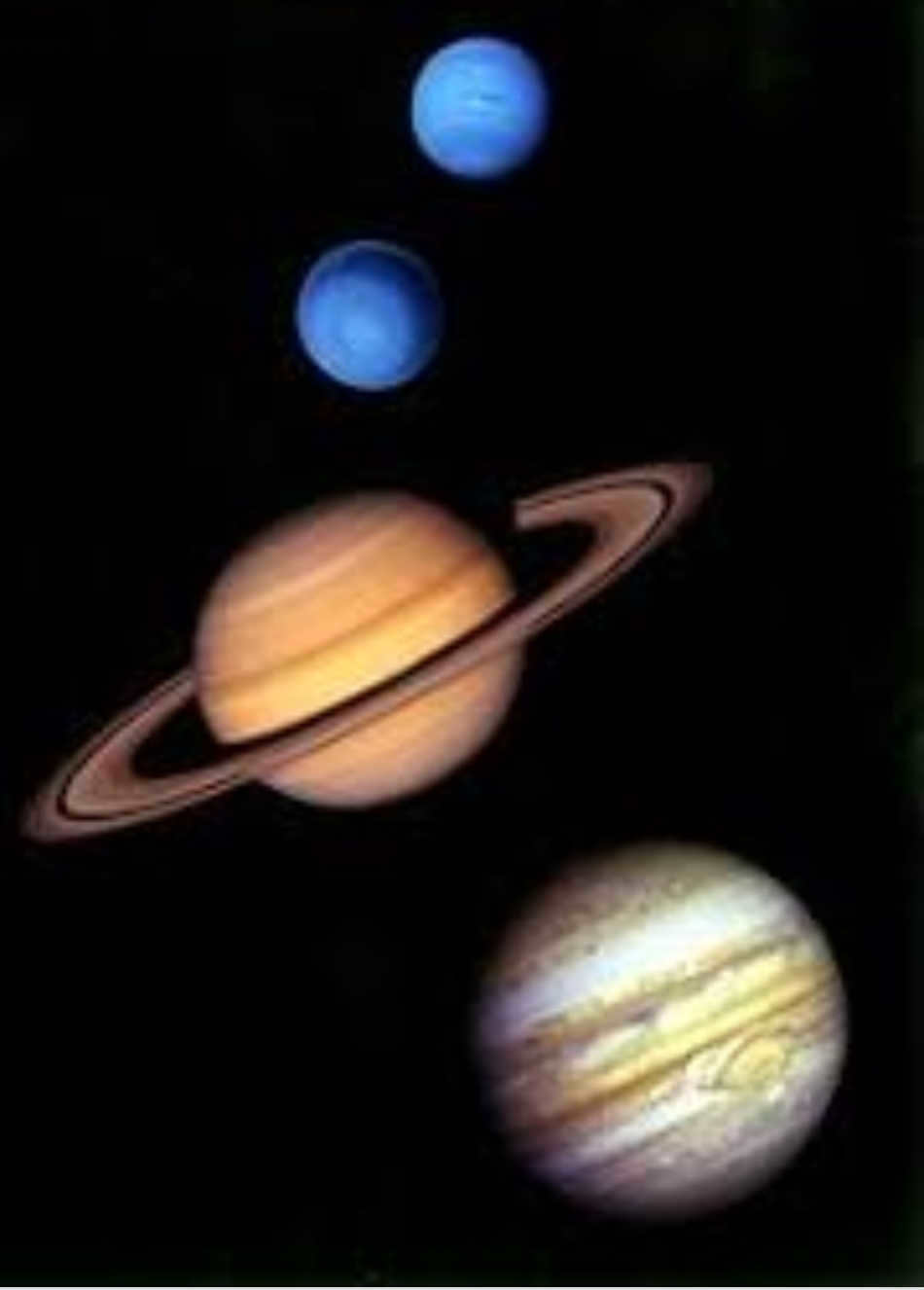
- Jupiter:diameter – 143,000 km, mass – 1.898E27 kg, distance from the Sun – 778.3 million km
- Saturn: diameter – 120,000 km, mass – 5.683E26 kg, distance from the Sun – 1,427 million km
- Uranus: diameter – 51,118 km, mass – 8.681E25 kg, distance from the Sun – 2,896.6 million km
- Neptune: diameter – 49,528 km, mass – 1.024E26 kg, distance from the Sun – 4,496.6 million km
So, here is the ranking of planets from the biggest to the smallest:
Jupiter takes the first position.
Saturn comes in second.
Uranus takes the third spot.
Neptune occupies the fourth place.
Earth holds the fifth position.
Venus is in sixth place.
Mars takes the seventh spot.
Lastly, Mercury comes in eighth place.
The planet Jupiter takes the lead with its impressive size. It not only surpasses all the other planets in terms of size but also in mass. Compared to Earth, Jupiter is 11 times bigger and 318 times more massive. Its interior is composed of dense materials.
As it draws closer to the core, the temperature and pressure measurements increase. The scientific community posits the presence of planets 15 times the size of Jupiter. Despite its immense size, Jupiter rotates on its axis at a faster rate than other planets.
- If Earth completes a revolution in one day, Jupiter manages to do so in just 12 hours.
- Mercury, the smallest planet in our solar system, boasts the smallest diameter. Due to its high density, this planet exhibits strong gravitational forces. The surface of Mercury shares many characteristics with that of the Moon.
- Out of all the terrestrial planets, Earth reigns as the largest. Our planet possesses the greatest gravitational pull and magnetic field. Only on Earth do we experience the divide of temperature into four distinct seasons.
- Mars has two seasons, which are longer than on other planets. The unique location of Mars in the solar system allows for the presence of liquid water, which is essential for sustaining life.
- The Moon, the only satellite of the planet, is approximately four times smaller than Earth. The gravitational force exerted by the Moon plays a crucial role in maintaining the stability of Earth’s axis.
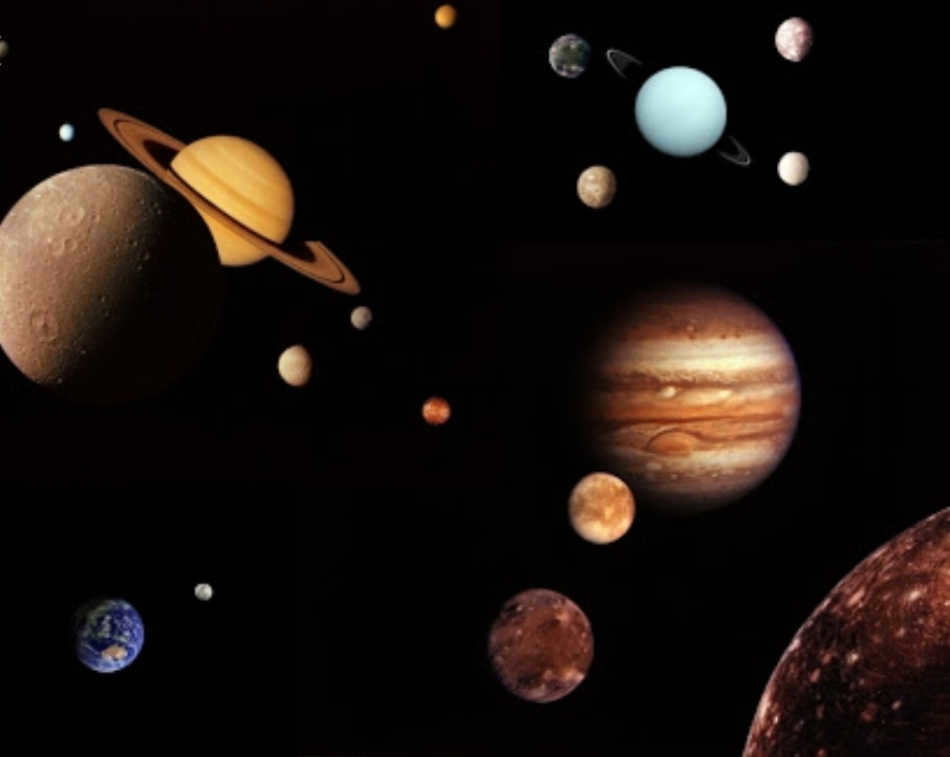
- The universe is home to a vast array of galaxies. The question of how many planets exist in the universe has long been a topic of scientific and space exploration. Our own galaxy, the Milky Way, is teeming with millions of stars.
- It stands to reason that, like our own Sun, many of these stars are likely to have planets orbiting around them. The Milky Way alone is estimated to host billions of planets.
- Out of these billions, over 500 million are considered potentially habitable. Additionally, more than 700 planets have been officially confirmed to orbit different stars. These planets, which exist outside of our own solar system, are known as exoplanets. exoplanets.
- A spacecraft has made a remarkable discovery of over 200 exoplanets that share similar characteristics with Earth, expanding our knowledge of potential habitable worlds beyond our solar system. The detailed study of these exoplanets will provide scientists with invaluable insights into the conditions necessary for the emergence of life.
- Through meticulous mathematical calculations, scientists have estimated that the vast Milky Way Galaxy is home to a staggering 400 billion stars, and consequently, an astonishing 800 billion planets.
- Excitingly, new space telescopes are currently in development, promising the ability to detect planets orbiting faint stars, opening up even more possibilities for exoplanet exploration.
- With the determination of the number and precise dimensions of these newly discovered planets, it becomes increasingly feasible to investigate their potential for hosting life.
Curious information about the planets
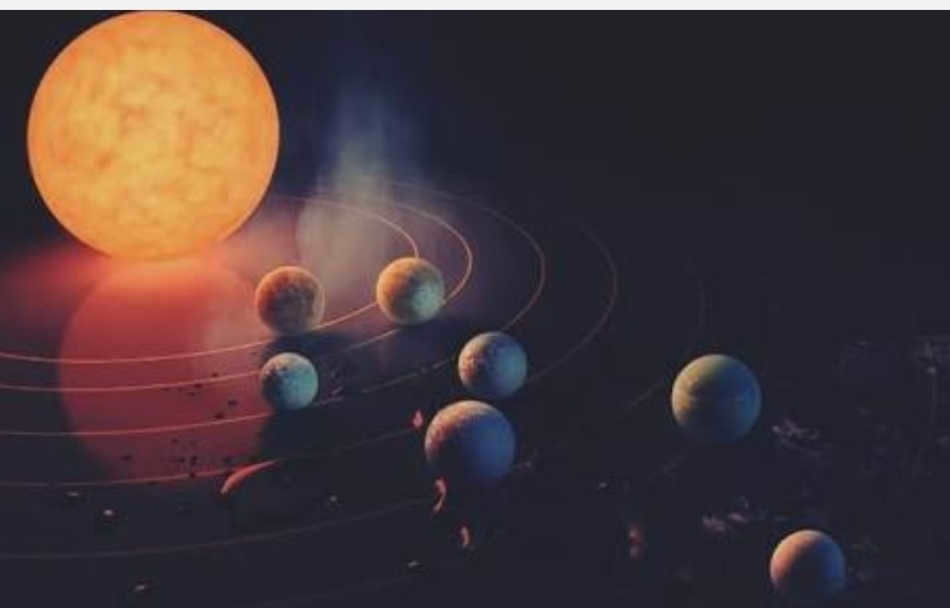
- Ancient Roman god of merchants and travelers is the namesake of the planet Mercury.
- Thunderstorms are frequently observed in the atmosphere of the planet Venus, which is named after an ancient Greek goddess associated with love and fertility.
- The Moon takes a calendar month to complete one rotation around the Earth, and its size is four times smaller than that of our planet.
- From outer space, one can observe frequent lightning flashes on Earth’s surface, which are caused by a high number of thunderstorms.
- The moons of Mars, Phobos and Deimos, have names that translate from ancient Greek to “fear” and “terror,” respectively.
- The planet Jupiter emits X-rays.
- The Earth is the only planet that is not named after an ancient deity.
- Mercury is the slowest planet, with one day on Mercury equaling six months on Earth.
- It is believed that Mars had life in the past.
- The gas giants do not have a solid surface and cannot be landed on.
- In the summer, Uranus experiences 20 years of sunshine, while in the winter, it experiences 20 years of darkness.
- Neptune is the only planet that scientists have discovered through mathematical calculations. The other planets were discovered through observation.
- Venus is known as the Morning and Evening Star because it is visible in the sky after sunset.
- The temperature surrounding the Sun is higher than the surface temperature of the Sun, possibly due to the magnetic forces exerted by the stars.
Witnessing a spectacular astronomical event, we are presented with a planetary parade where a group of planets aligns on one side of the Sun within a specific sector. This extraordinary phenomenon can have an influence on the physiological well-being of humans.
Video: Discover 10 fascinating facts about our beloved planet Earth
Throughout history, mankind has been fascinated by the mysteries of outer space, and our understanding of it has evolved over time. However, some of the early knowledge we gained has since been proven to be incorrect. One area of ongoing debate is the number of planets in our solar system.
Our perception of what constitutes a planet has changed over the centuries. In the past, any celestial body that was slightly larger than an asteroid and located near the sun was considered a planet. The ancient Greeks even believed that there were seven planets in our solar system. However, their calculations were flawed because they believed that all celestial bodies revolved around the Earth, with it being the true center of the universe. In their view, even the Sun was just another planet.
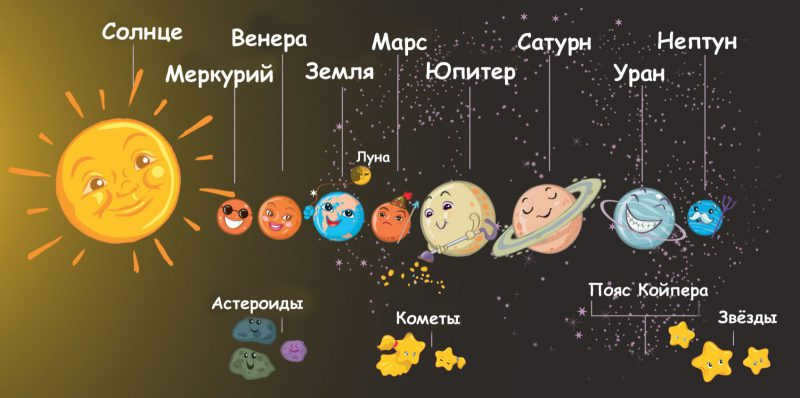
What is the total number of planets in our solar system?
In 1930, Pluto was discovered and classified as the ninth planet in our solar system. However, as time went on, scientists identified specific criteria that define a planet.
These criteria include:
- Orbiting around a star, such as the Sun in our solar system.
- Possessing their own gravitational force, resulting in a spherical or nearly spherical shape.
- Not being in close proximity to other large celestial bodies.
- Not being a star itself.
No other device has ever reached it, however, the neighboring planet Neptune has been the subject of relatively active study. Since the late 20th century, scientists have observed numerous neighboring celestial bodies, which have been classified as trans-Neptunian objects. It soon became evident that Pluto was among these objects.
Consequently, in August 2006, a new classification was established – “dwarf planets”. This category included Pluto and a large asteroid that was also discovered in close proximity to Neptune. It was partially due to the presence of this asteroid that Pluto was “downgraded”. Following the change in status, the count of such celestial bodies was altered. Thus, there are now eight planets in the solar system.

The initial planets of the solar system
Mercury takes the first spot in the lineup. It holds the distinction of being the planet closest to the Sun, which gives it a unique set of characteristics.
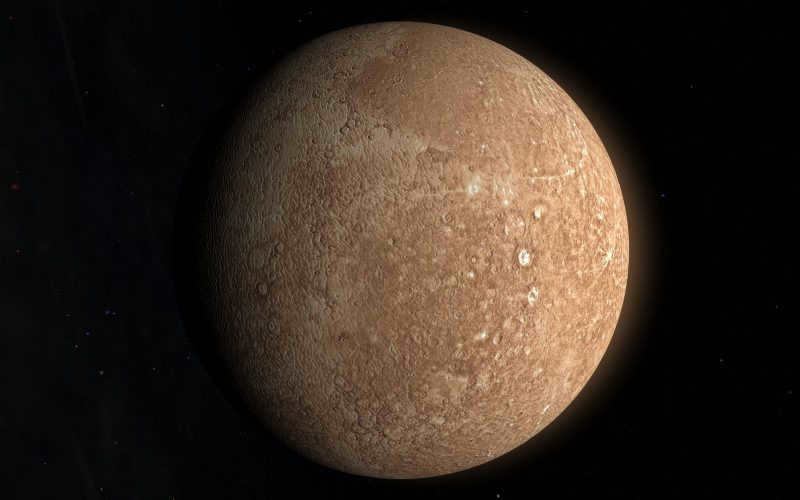
- If humans were able to visit Mercury, they would witness the Sun appearing three times larger than it does on Earth.
- The planet undergoes drastic fluctuations in temperature. Temperatures can skyrocket from -175 to +430 degrees.
- Mercury’s orbital speed is incredibly fast. This is one of the reasons why it was named after the deity Mercury, who swiftly delivered news to the gods. Mercury completes a full orbit around the Sun in just 88 days, while one day on Mercury is approximately 58 Earth days.
- Due to the absence of an atmosphere, the sky on Mercury always appears black. Despite the abundance of sunlight, there are regions where sunlight barely reaches, mainly due to the planet’s axial tilt.
Mercury lacks water, and this fact, along with extreme temperature fluctuations, is the reason why this planet is not conducive to supporting life. Following Mercury is Venus, a planet that has been visible to the naked eye since ancient times. This is not surprising considering it is considered the third brightest planet in the sky, which led people to mistake it for a star.
- Venus shares many similarities with Earth, including similar composition, size, and weight.
- The planet’s movement is much slower, and due to its close proximity to the Sun, it experiences high temperatures.
- The heat is further intensified by an atmosphere primarily composed of carbon dioxide, with a sulphurous cloud layer.
- The atmospheric pressure on Venus is 95 times greater than that of Earth.
One more characteristic of this planet is its unique behavior of not rotating in the same direction as most other celestial bodies.
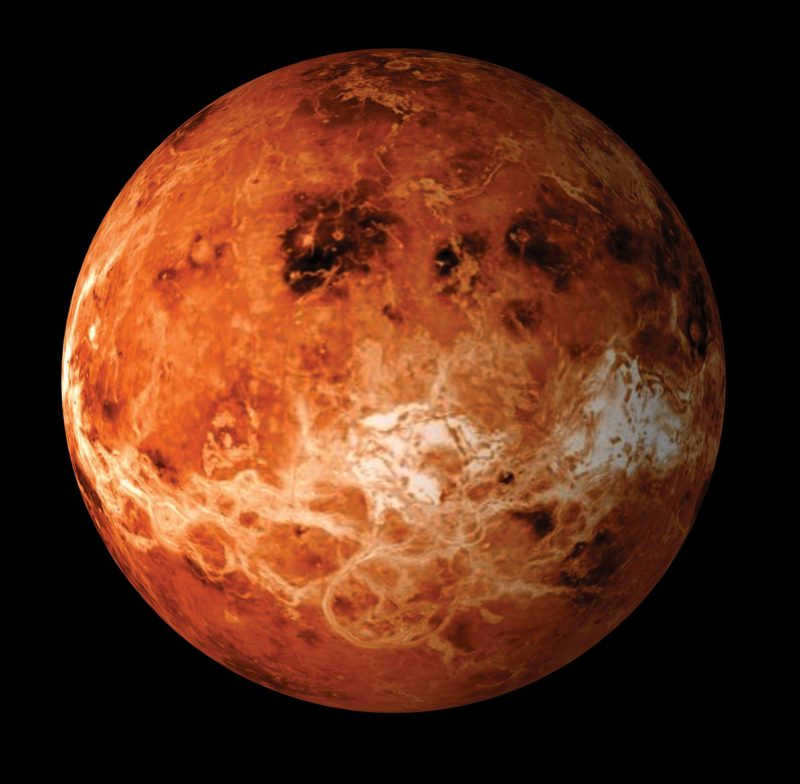
Comparing Earth and Mars
Earth and Mars are two planets in our solar system with distinct characteristics. Earth, as the third planet from the Sun, has a unique position that has allowed life to thrive. Its moderate distance from the Sun, along with other factors, have contributed to the development of life on Earth. Additionally, Earth possesses several noteworthy features.
- One distinguishing characteristic of Earth is its strong gravitational pull, which is greater than that of its neighboring planets.
- Earth also boasts the strongest magnetic field among its planetary neighbors.
Furthermore, Earth’s density is another notable attribute that sets it apart from other planets.
Other factors that have played a significant role in the emergence of life on Earth include the presence of a hydrosphere and a sizable satellite that helps stabilize the planet’s axial tilt in relation to the Sun.
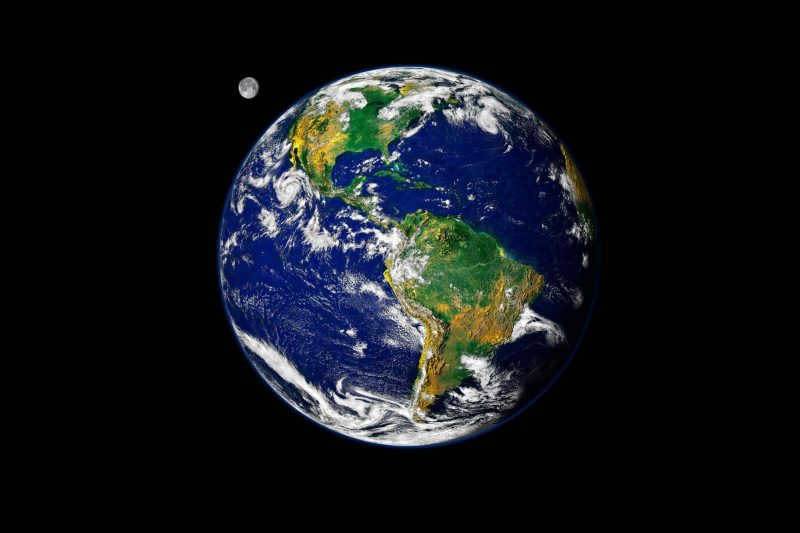
Despite being larger than Pluto, Mars is still one of the smallest planets in our solar system. It is characterized by a very thin atmosphere and extremely low pressure, which is about two hundred times lower than that of Earth. Similar to Mercury, Mars experiences significant temperature variations.
- Scientists consider Mars to be the only planet where the existence of life is theoretically possible.
- They hypothesize that there was once water present on the planet.
Mars has two satellites that move in opposite directions. Over time, Phobos is gradually slowing down and getting closer to Mars, while Deimos is moving further away.
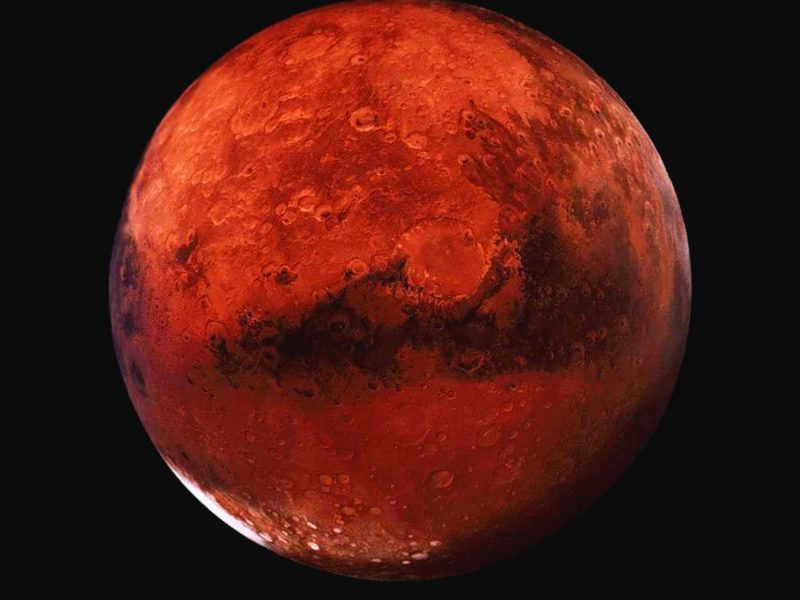
Jupiter and Saturn
Jupiter, the largest planet in the solar system, is so massive that it could contain approximately 1300 Earths within its boundaries.
- Jupiter ranks as the third brightest celestial body, following only the Moon and Venus.
- One of Jupiter’s distinguishing characteristics is its incredibly strong magnetic field, surpassing that of Earth.
- With a rotation period of just ten hours, Jupiter is the fastest spinning planet in our solar system.
- Jupiter is most famous for its iconic red spot, which is actually an atmospheric vortex.
- Although not as prominent as Saturn’s rings, Jupiter does possess a faint set of rings.
- In addition, Jupiter boasts the largest number of satellites of any planet, with evidence of water discovered on one of them.
Lastly, Jupiter possesses a unique phenomenon where areas exposed to sunlight experience cooler temperatures compared to shaded regions.
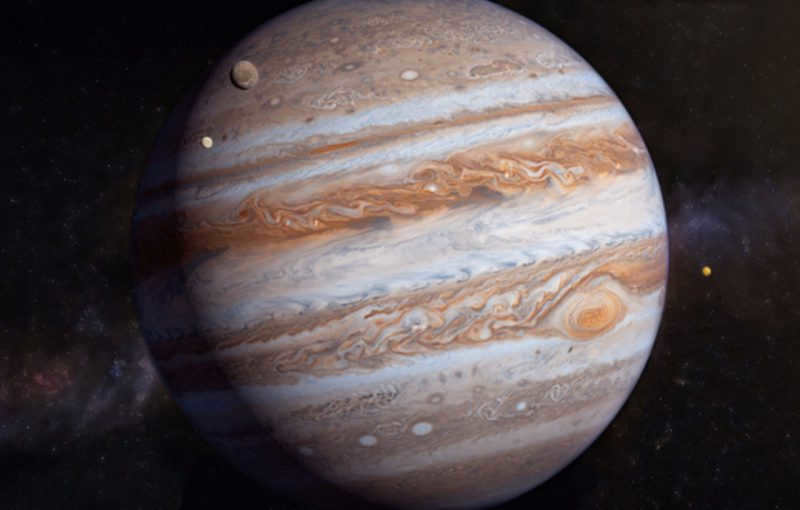
Following Jupiter, Saturn comes next in line and is known as the most rarefied planet, with a density even lower than that of water. It is surrounded by high-speed winds that exceed the speed of sound. Saturn has a total of 60 satellites orbiting around it, which is three less than Jupiter. One of these satellites is Titan, the second largest of its kind.
However, what stands out most about Saturn are its massive and luminous rings. These rings reflect significantly more light than the planet itself. The inner rings of Saturn rotate at a faster pace compared to the outer rings. Regardless, these rings are widely regarded as the most extraordinary phenomenon in the entire solar system.
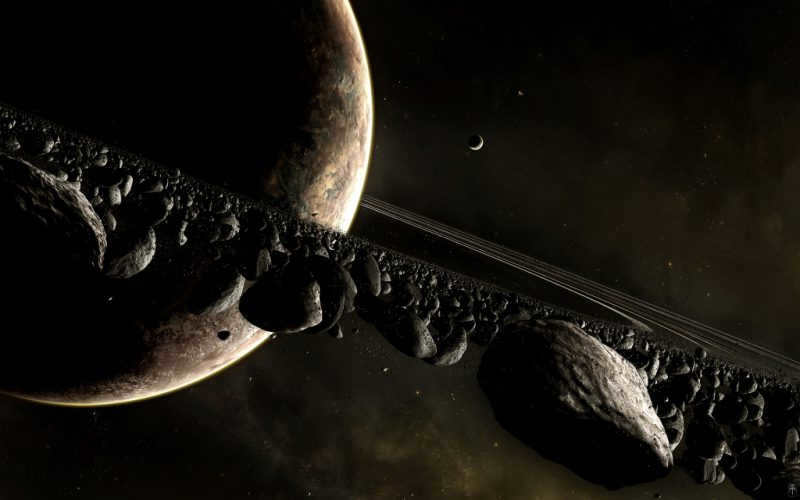
Distant planets
Ranked seventh in terms of distance from the Sun, Uranus stands out for its exceptionally frigid temperatures. Temperatures here can easily plummet to -220 degrees. Interestingly, there is no trace of hydrogen in the planet’s composition, but there is an abundance of ice. This makes Uranus a true ice giant.
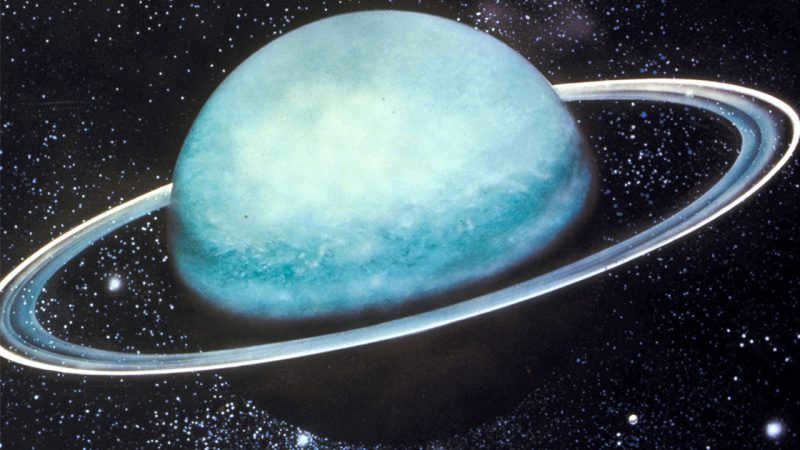
- The planet’s rotation is unique, resembling that of a tilted axis.
- Every forty-two years, Uranus experiences alternating seasons of winter and summer. During winter, there is a perpetual night, while summer brings continuous daylight.
- During the transitional periods of fall and spring, the sun rises and sets approximately every nine hours.
- Similar to Jupiter, Uranus possesses rings, although they are not particularly bright and can often go unnoticed.
Uranus is larger and heavier than Earth, and it is also approximately the same size as the next planet, Neptune. Both Uranus and Neptune are four times larger than Earth, but Neptune surpasses Uranus in terms of weight. As of 2006, Uranus was considered the last planet in the solar system. Similar to Pluto, its discovery was almost accidental.
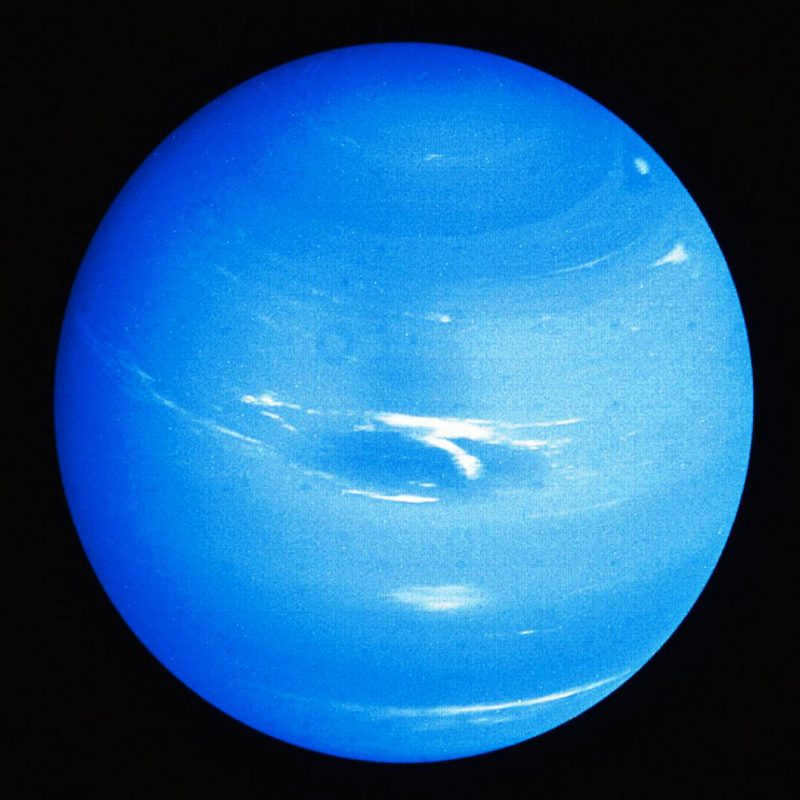
- The planet seems blue when viewed from a distance due to the abundance of methane in its atmosphere.
- Neptune stands out among others with its nearly perfect spherical shape.
- It has a slow rotation and a limited number of moons, specifically 13.

